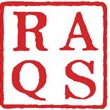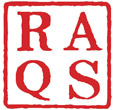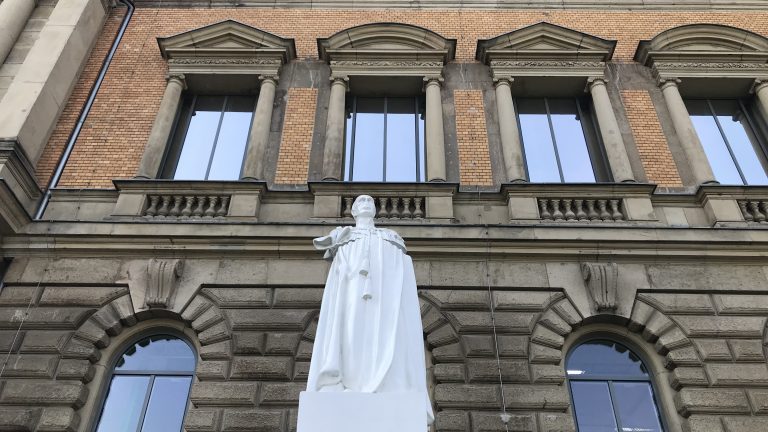Raqs Media Collective
Exhibition
K21, Museum for 21st Century Art, Dusseldorf (2018)
The point of departure for this exhibition is Raqs’ continual fascination with time, a topic that has preoccupied the members of the group intensively ever since they began working together. In works such as Escapement (2009) and Re-Run (2013), they pose such questions as: what is time? What does it mean to measure time? And: how does time relate to space and history?
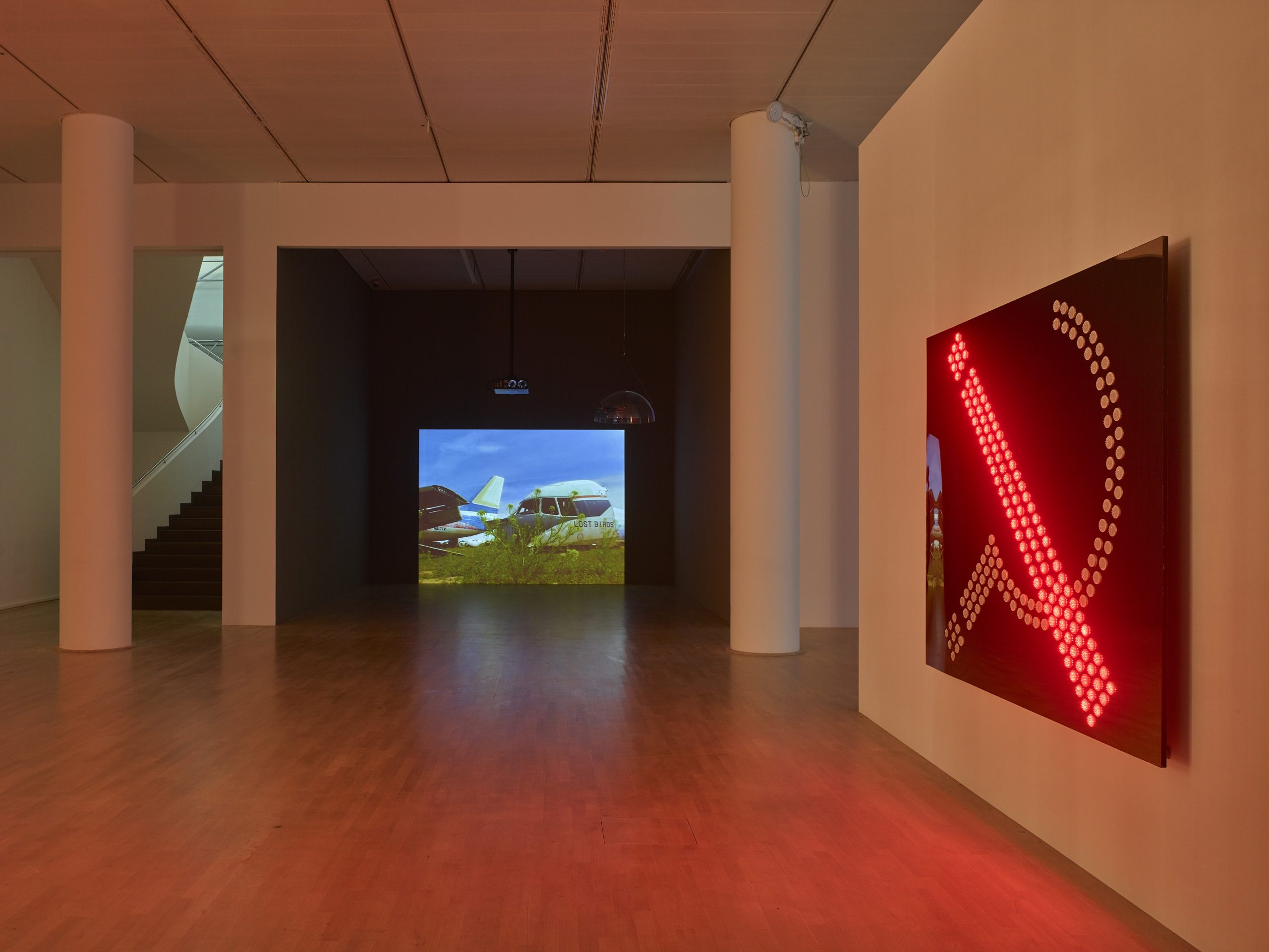
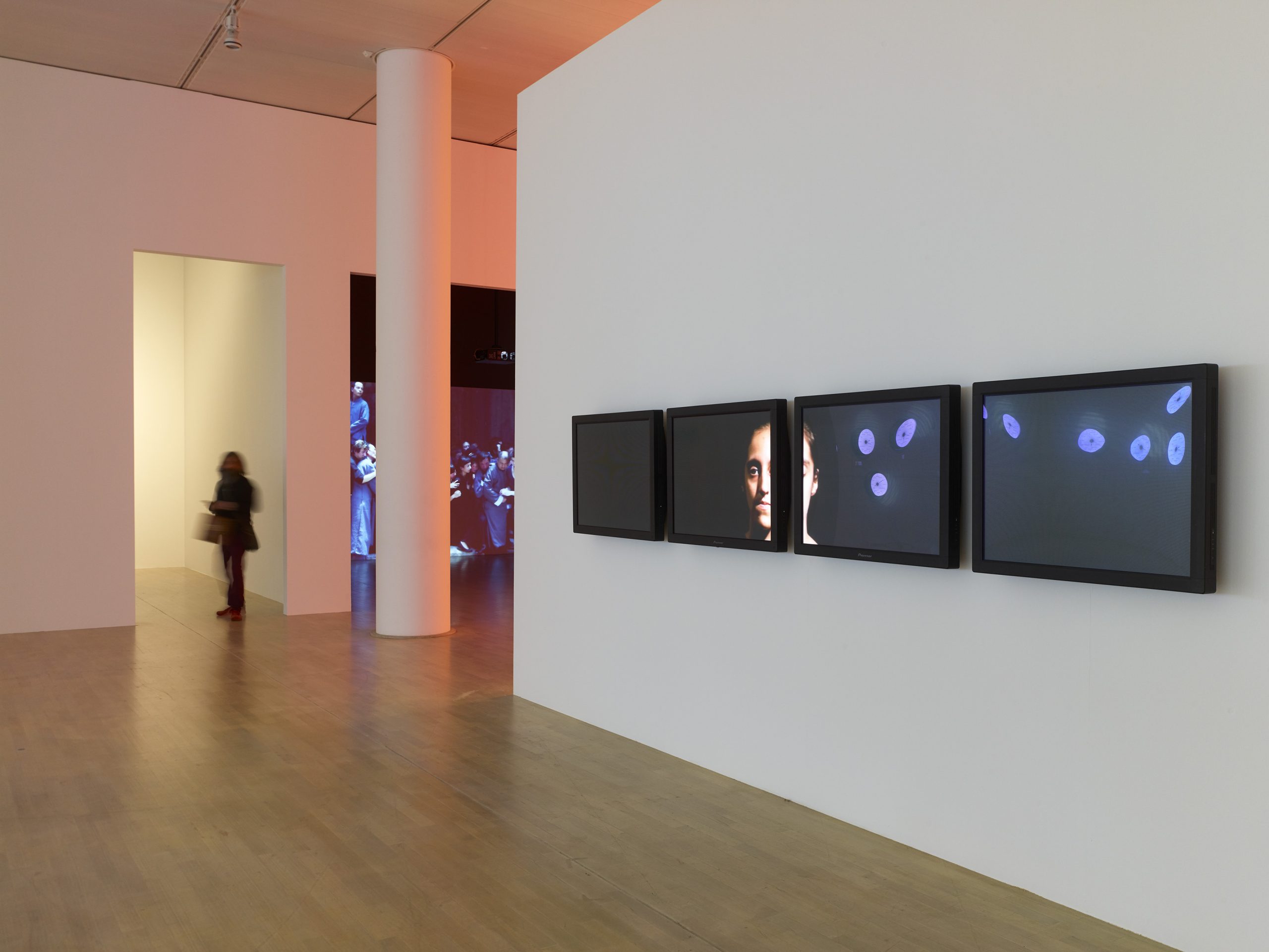
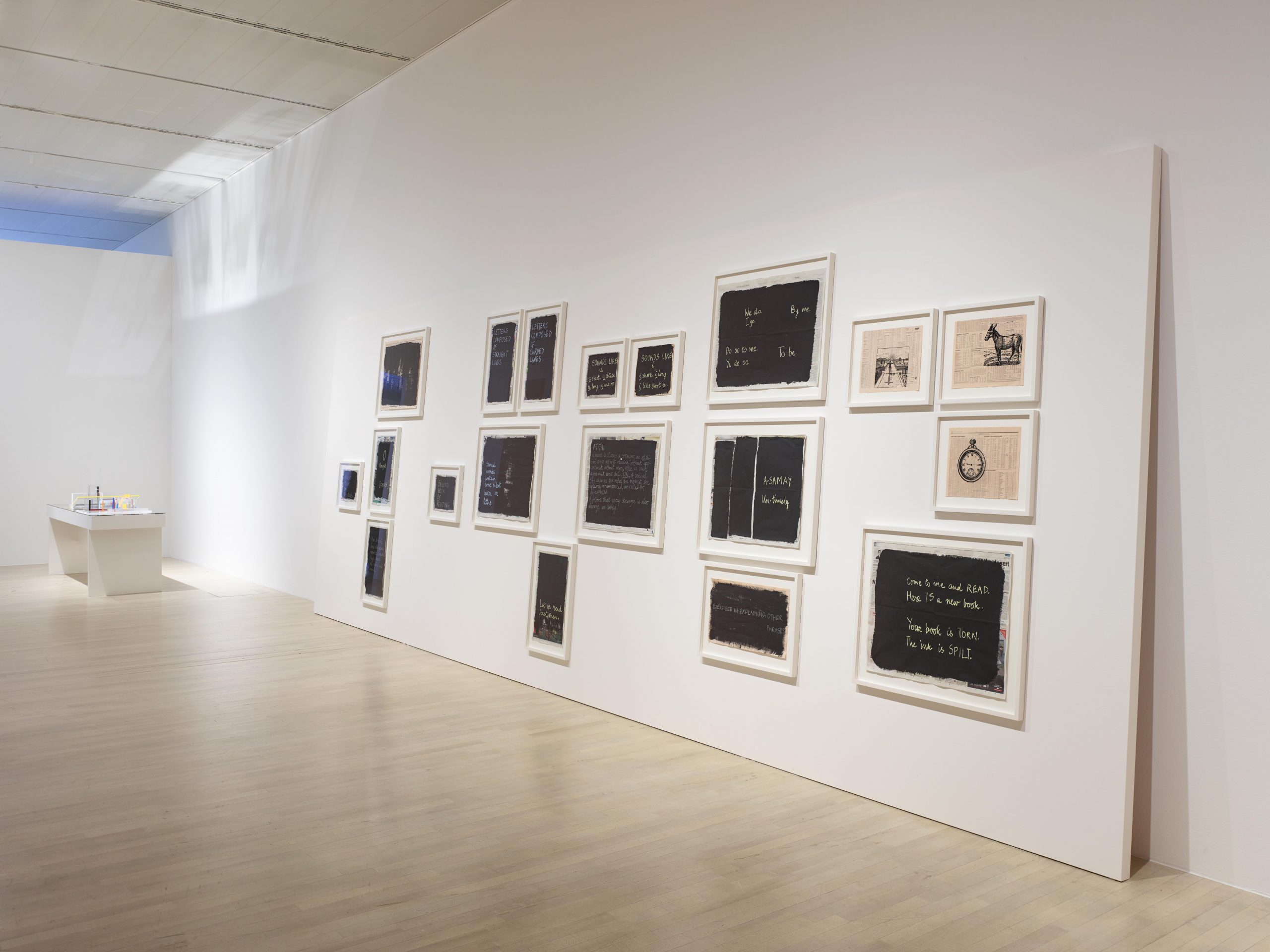
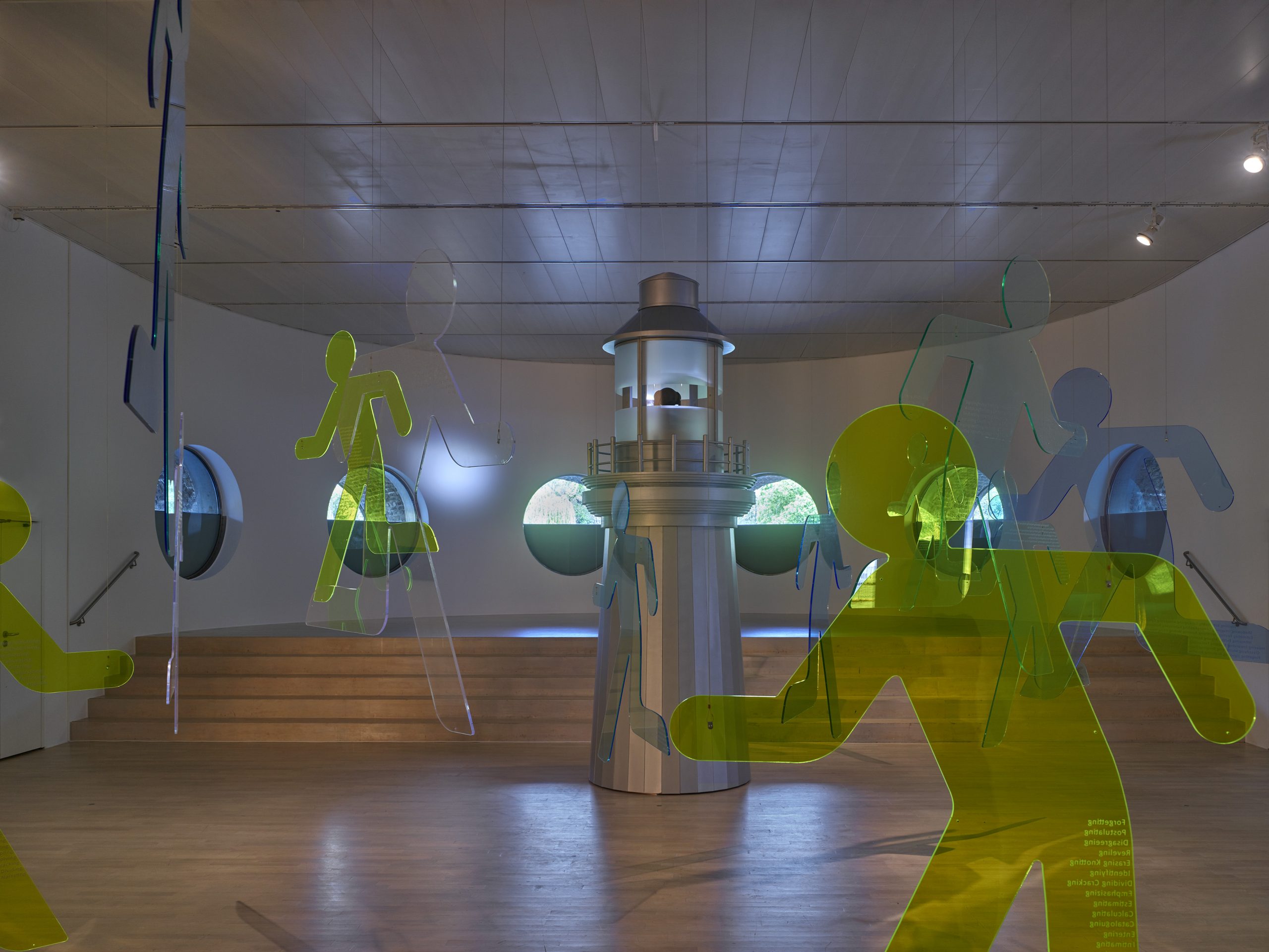
Whenever the Heart Skips a Beat
Animated horological video, words (4 minutes 31 seconds)
The heart is the first clock that counts the body’s time. And each heartbeat is a moment given over to knowing what it feels like to be alive. The heart skips a beat with joy, misses a beat with terror, quivers with surprise.
Whenever we are transformed, the heart skips a beat. Whenever the heart skips a beat, we are re-arranged inside. In the eloquent silences that syncopate the tumult and drumbeat of our sense of the world, the heart tarries. In that silence, the senses wander, and sentience watches itself, sometimes alert, sometimes astray. The heart skips a beat, the mind makes a move, the body replies. What begins with our eyes, travels to the brain, courses to our heart and then returns to our eyes. We become the words we think we feel.
Whenever the Heart Skips a Beat – an animated video showing a clock-face that features a set of eleven words instead of numbers in order to represent the hours. The words are an array of adjectives and nouns that qualify each other, flying across the face of the clock, arranging and rearranging themselves, producing constant permutations and combinations of states of mind and being through the actions of the hour and minute hands that join any two words at different points of time.
The lexical patterns produced by this process register a deeply felt, subjective experience of time and duration. This work grows out of Raqs Media Collective’s continued pre-occupation with time and with the metaphorical possibilities of horology. It updates and annotates their earlier experiment with clocks, feelings and words – Escapement.






The Knots that Bind are the Knots that Fray
Digital film installation, no audio, 7 flat-screen monitors
In early April 2009 the last of the distinctive Titan cranes from the Tyneside Swan Hunter shipyard in northern England were loaded up onto a heavy load vessel and sailed out of the River Tyne. These vast iconic forms were dismantled and shipped to a new life at the Bharati shipyard on the West coast of India.
Raqs treats found footage of the last voyage of the ship-building cranes down the Tyne river (shot by an engineer and amateur shipyard enthusiast) to create a world of passages, transitions and departures. The ghostly forms within the images allude to floating worlds, to the enchantment of industrial machinery and the life of ships.They remain indefinite and suggestive of place, evoking an archive built by acts of lay remembering. The video enthusiast’s footage of a piece of local history is transformed in this work into vignettes from a fantastical voyage. The work is both about drifting away and coming ashore. The ‘knots’ of the title can refer both to nautical speed as well as to the complex ties that bind people to histories. Ties hold things together and speed frays them apart. The knots that bind are the knots that fray.
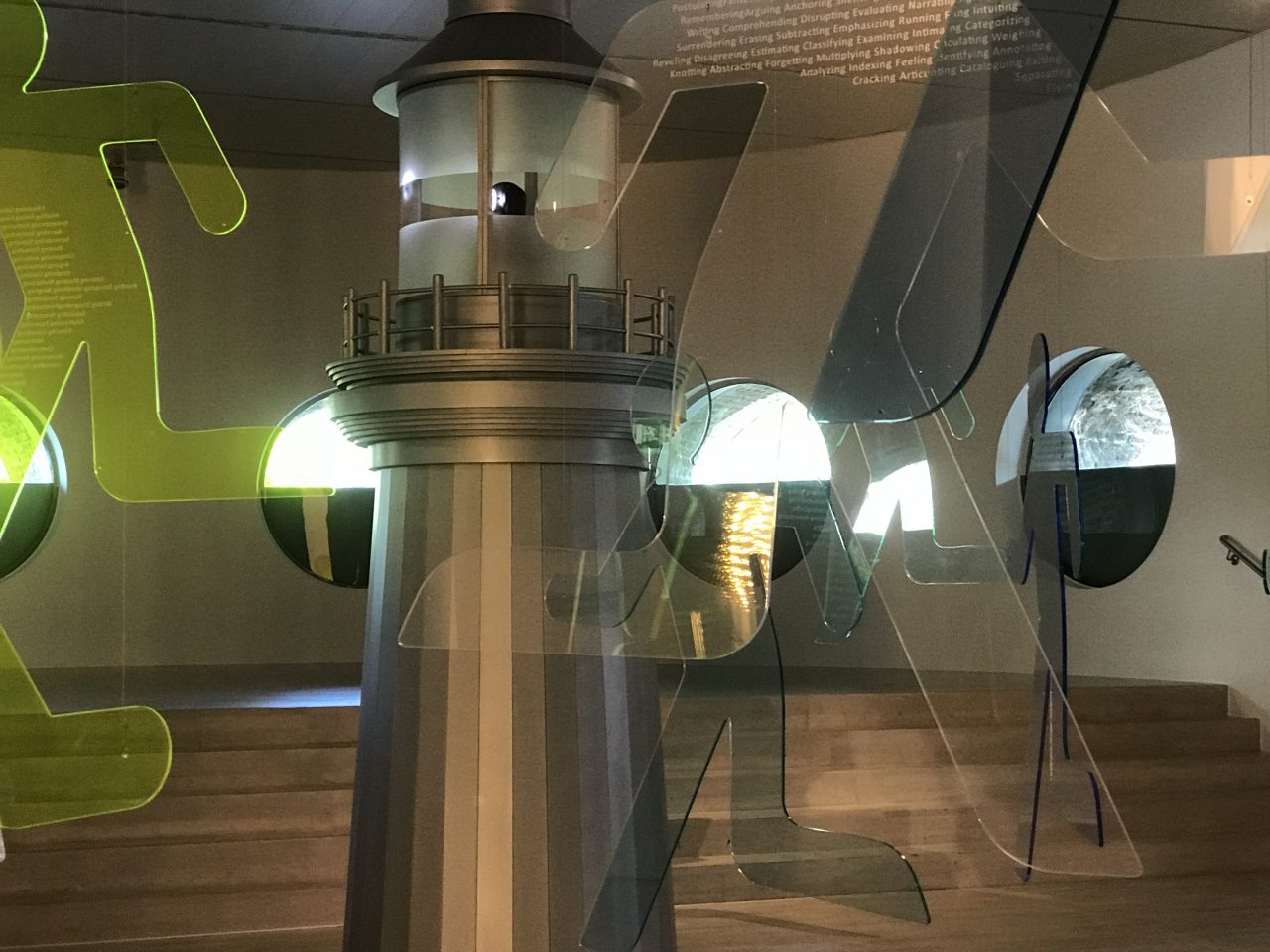
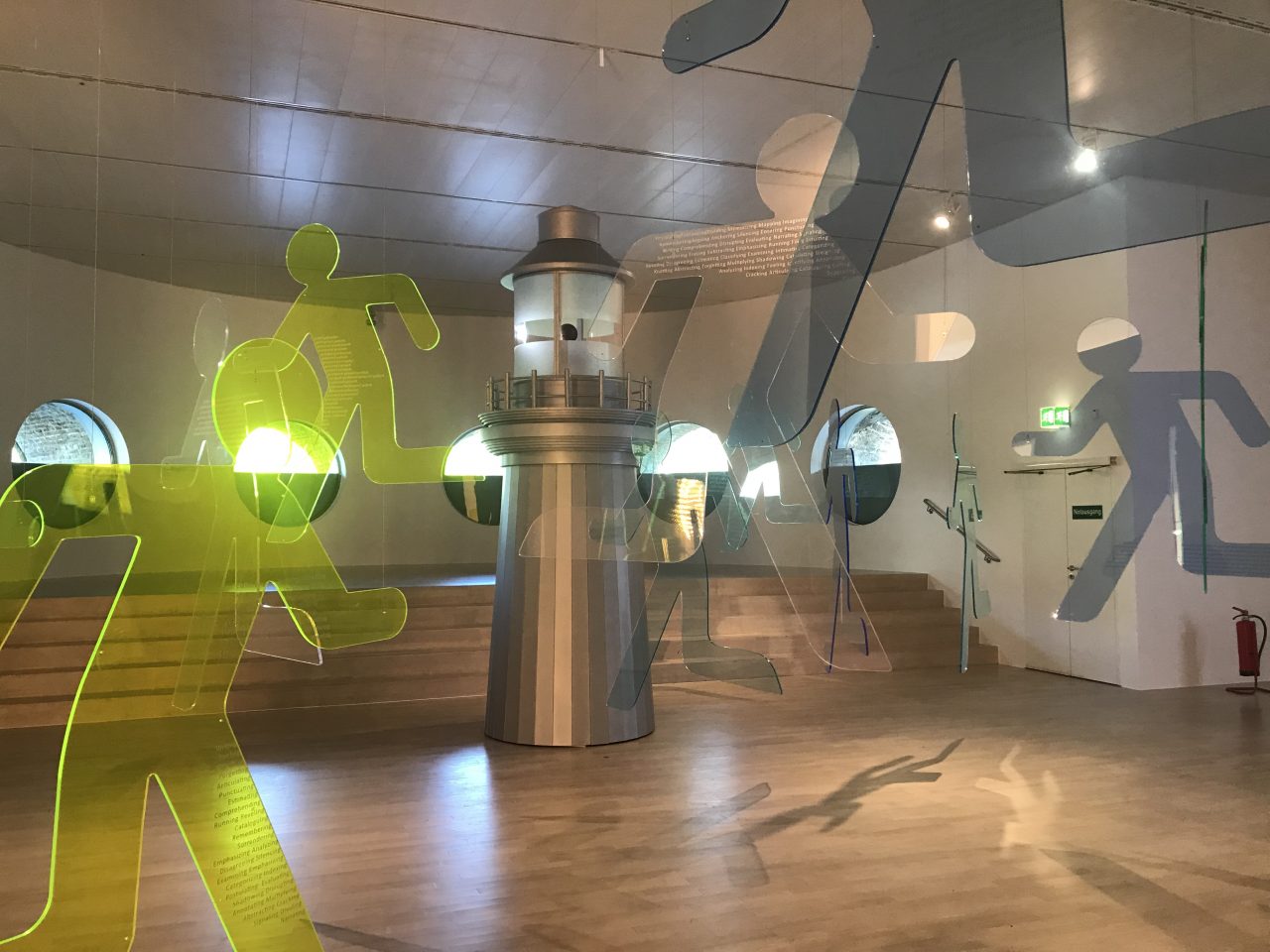
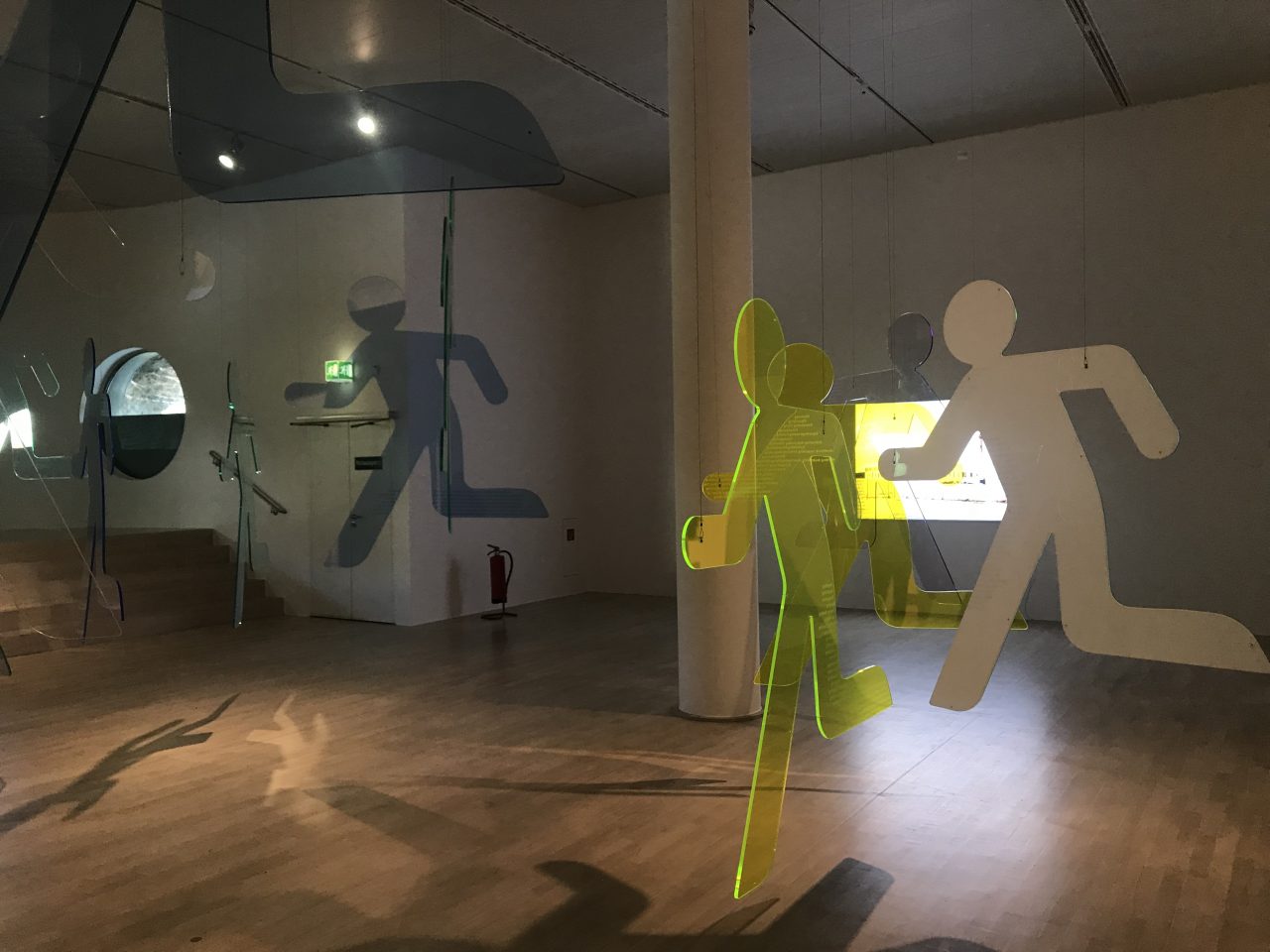
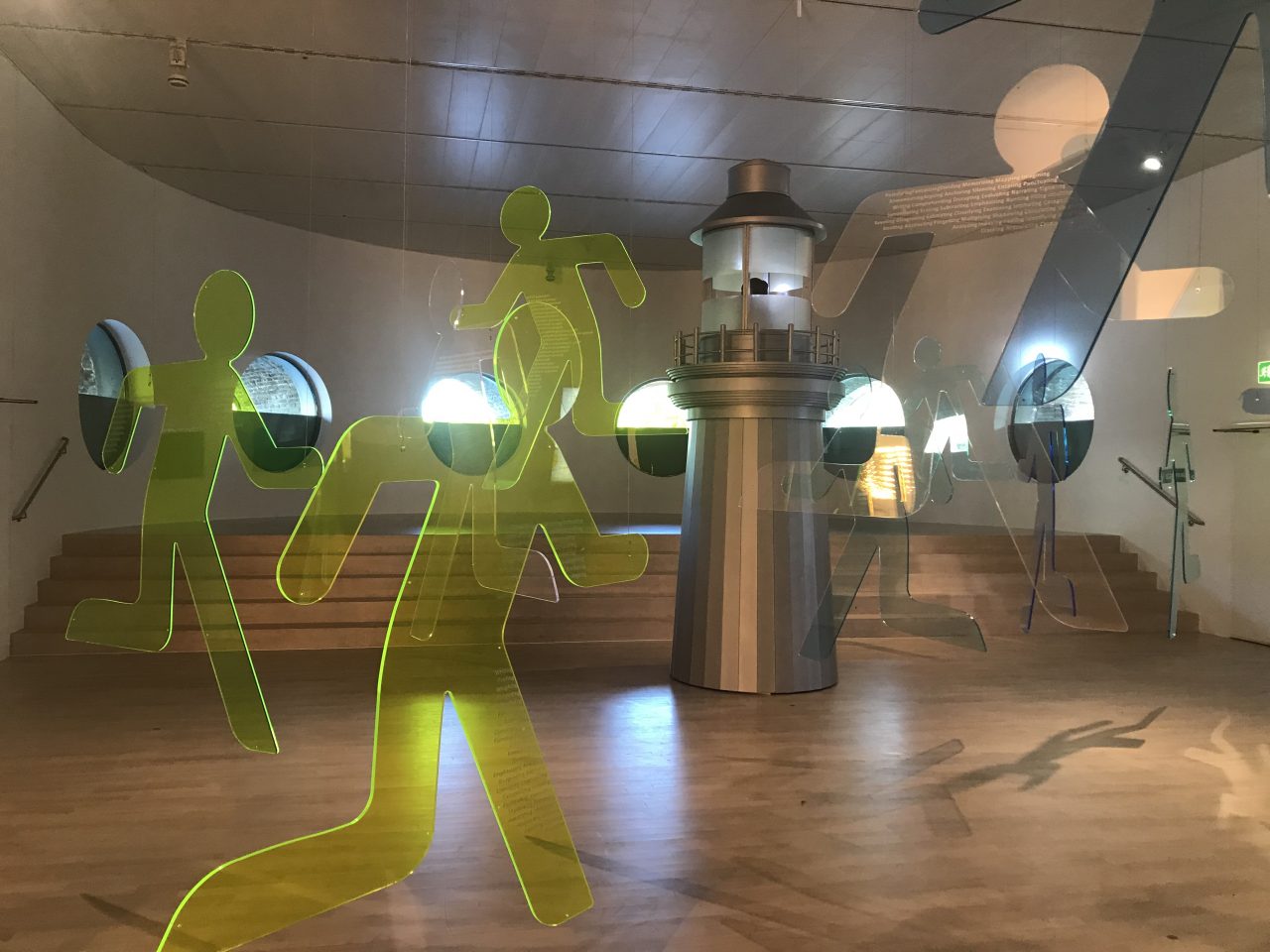
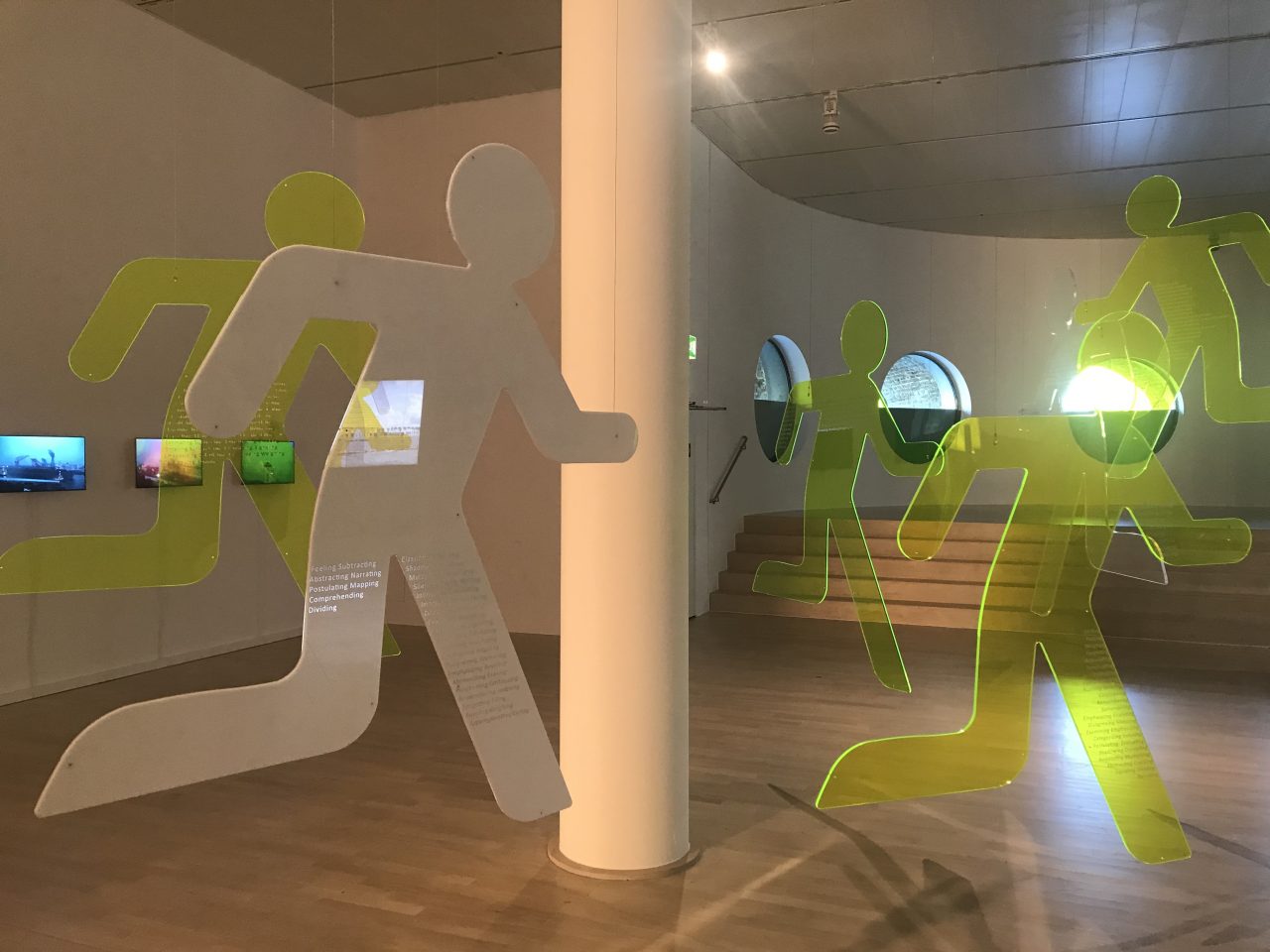
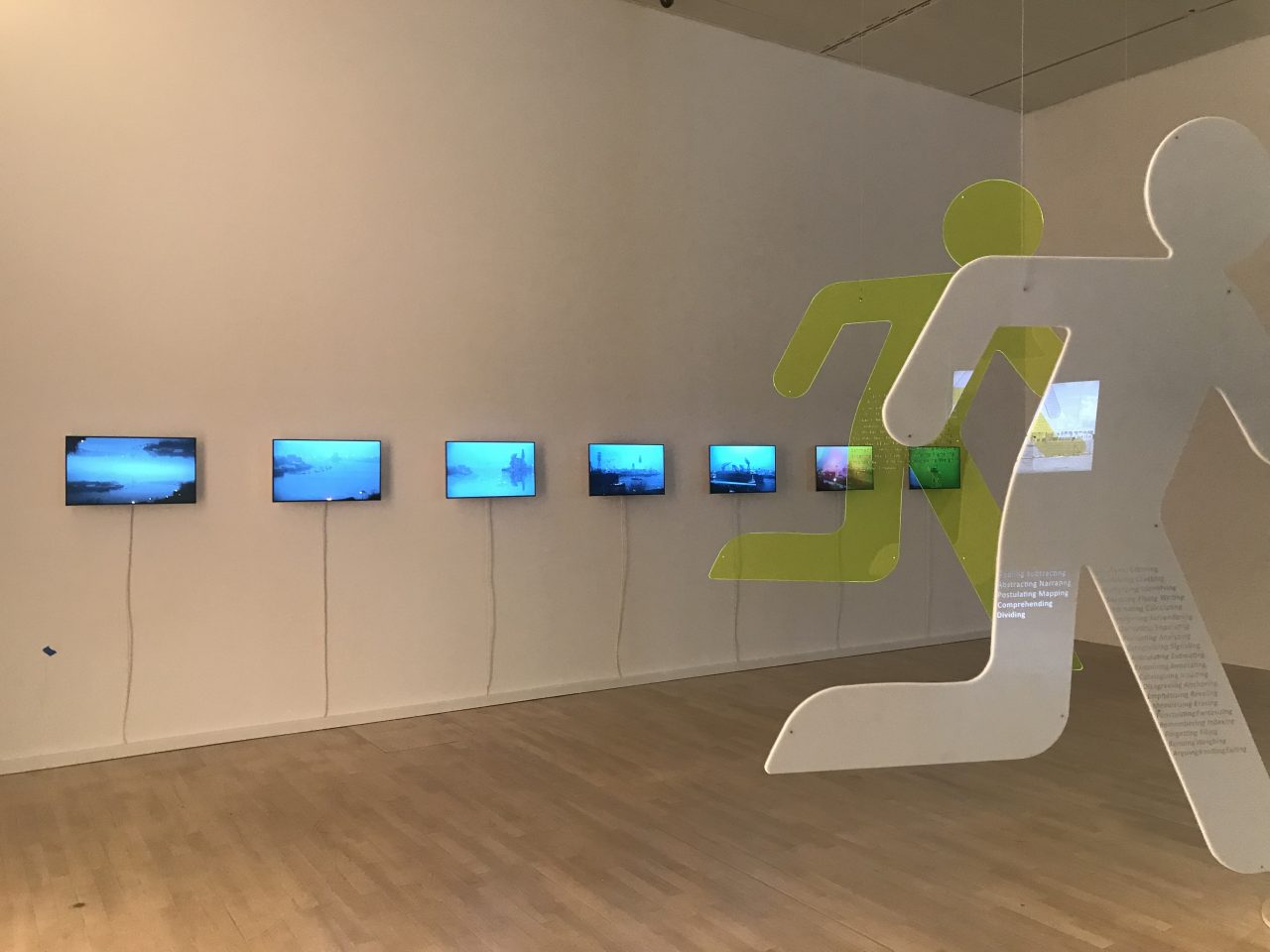
Installation with 27 clocks, high glass aluminium with LED lights, four flat screen monitors, video and audio looped, dimensions variable
Escapement invokes clockwork, emotions, geography, fantasy and time zones to ask what is contemporaneity – what does it mean to be living in these times, in these quickening hours, these accumulating minutes, these multiplying seconds, here, now?
Escapement is a horological, or clockmaking term. It denotes the mechanism in mechanical watches and clocks that governs the regular motion of the hands through a ‘catch and release’ device that both releases and restrains the levers that move the hands for hours, minutes and seconds. Like the catch and release of the valves of the heart, allowing for the flow of blood between the chambers of the heart, which sets up the basic rhythm of life, the escapement of a watch, regulates our sense of the flow of time. The continued pulsation of our hearts, and the ticking of a clock, denote our liberty from an eternal present.
With each heartbeat, with each passing second, they mark here and now, promise the future and remember the resonance of heartbeat that just ended. It is our heart that tells us that we live in time. The installation invokes clockwork, emotions, geography, fantasy and time zones. Each clock face has twelve words that describe emotions, or states of being where we would normally expect the hours to be. When its a quarter past twelve, these clocks would read – ‘guilt past epiphany’. Twenty-four of the twenty-seven clocks mark the time of different cities – Liverpool, Baghdad, Delhi, Sao Paulo, Tokyo, Johannesburg and eighteen other locations. Three clocks tagged to three imaginary cities – Babel, Shangrila and Macondo – run backwards mirroring real time. The video screens show the face of an androgynous, ageless person, transiting between the hours, listening to heartbeats and other rhythmic and arrythmic sounds.
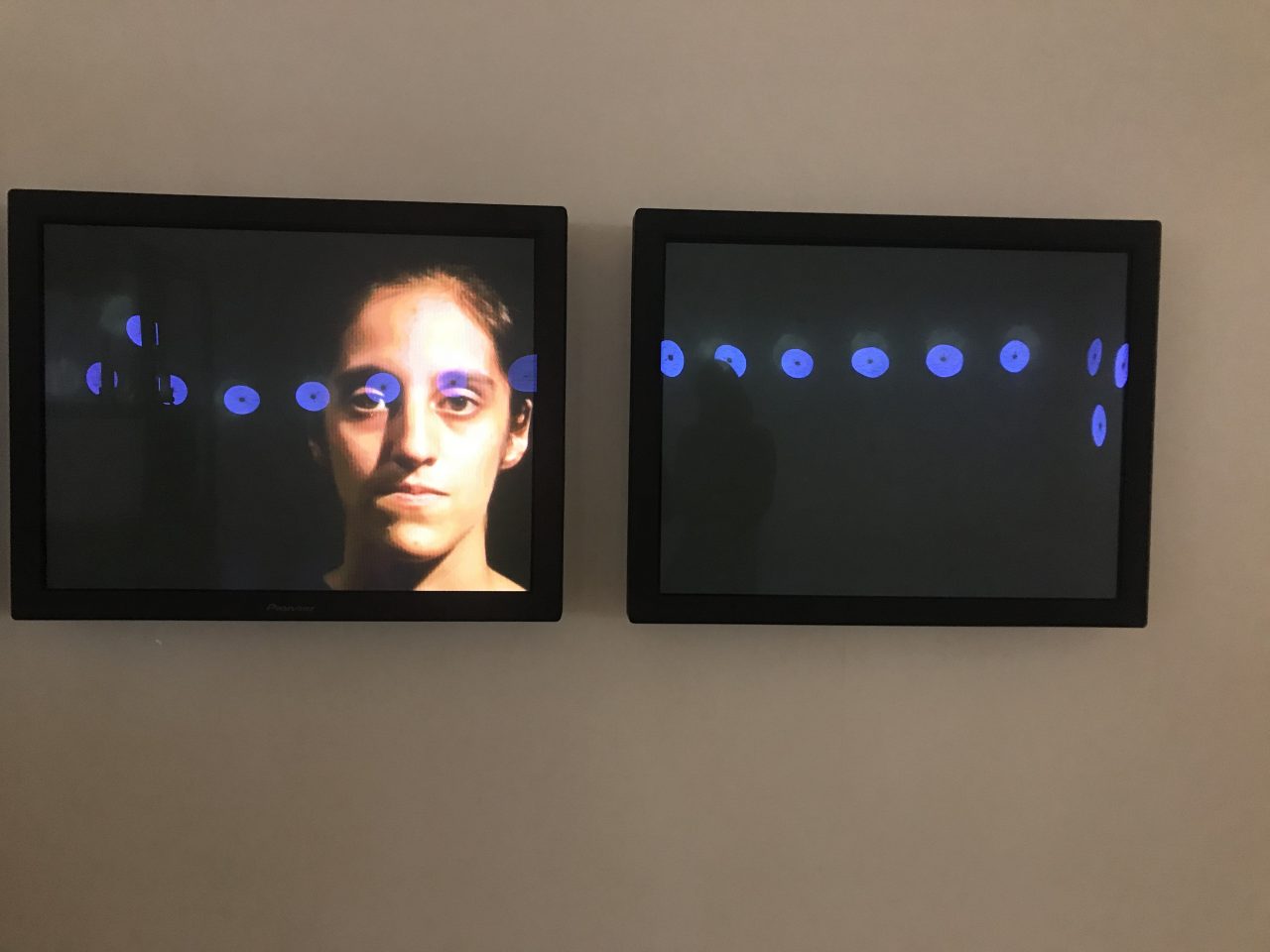
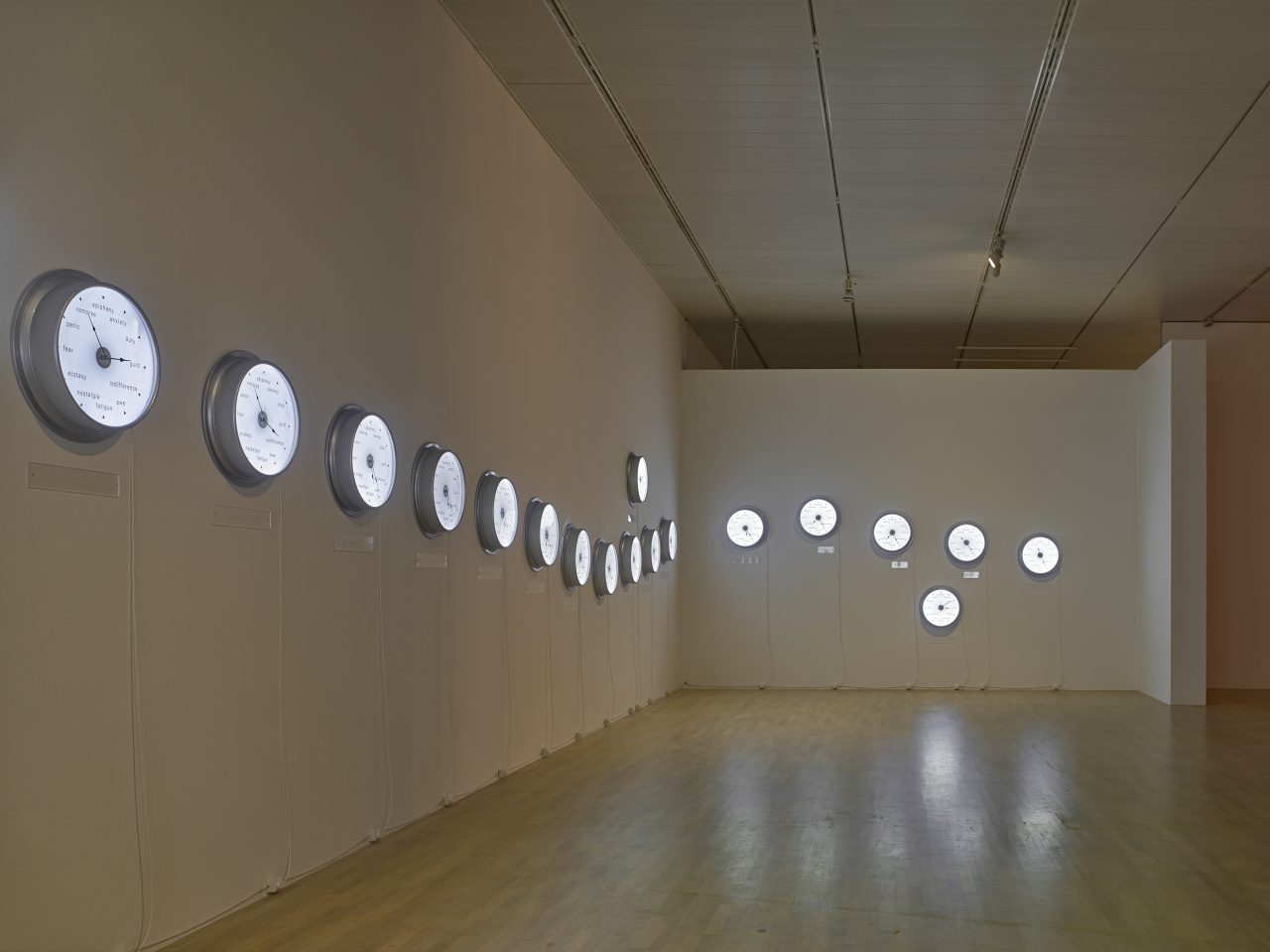
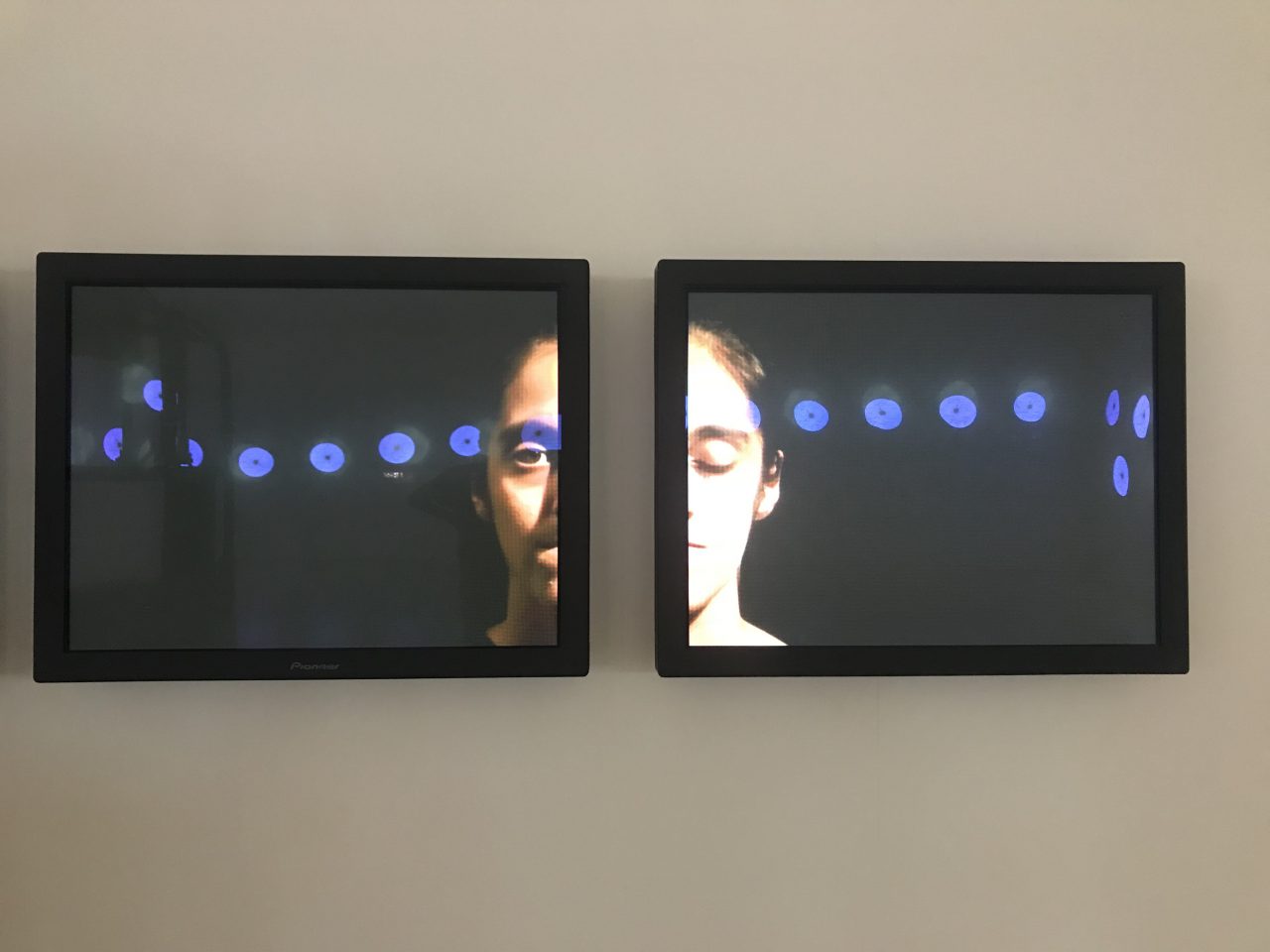
Floating sculpture, stainless steel, steel cable, wood, concrete anchors, 2 m above water x 13 m
More Salt In Your Tears is a text sculpture composed of three dimensional stainless steel letter-forms. The letters combine to form a single phrase – More Salt In Your Tears – that can be visible from the decks of passing ferry-boats, ships and low-flying aircraft. With this work we fulfill three specific desires, of writing on water, of connecting body fluids like tears in a precise and intimate way to large natural water bodies and of drawing attention to the ways in which we all respond at a subliminal level to the presence of water. This work continues a pre-occupation with the emotional resonances of marine and coastal landscapes that began with Unusually Adrift From the Coastline (2008), which used the memory of abandoned light-houses to tap into the ineffable quality of our encounters with light, horizons and coastlines by the North Sea.
With More Salt In Your Tears we move into another register, of reading the sea, of weighing tears and tasting the feeling what it means to be close to the sea. Seen at a distance, the work will appear as a reflecting interruption on the water whose shapes also resolve into letters and words. The letter-forms are a set of polished surfaces, gleaming like mirrors as they stand one metre above the water and fifteen metros across the surface of the sea. The forms will mirror the horizon, the sea, reflecting the changing sunlight, and aspects of anything that sails or swims past.The clear surface will change colour as the sea, sky and sunlight themselves vary over the course of the day. In this way, the work will act as an index of the alive, changing surface of the sea, the seasons and time itself.
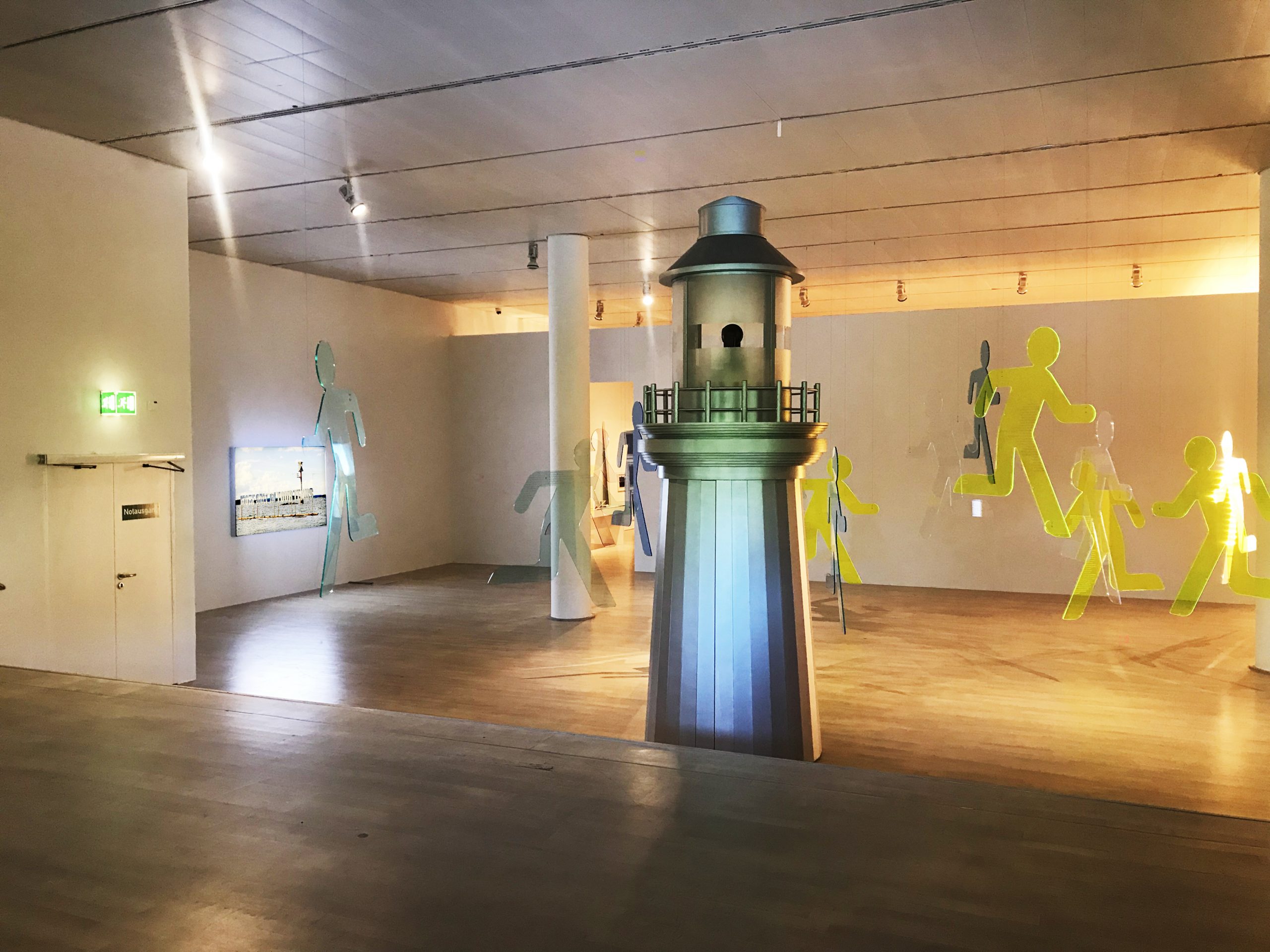
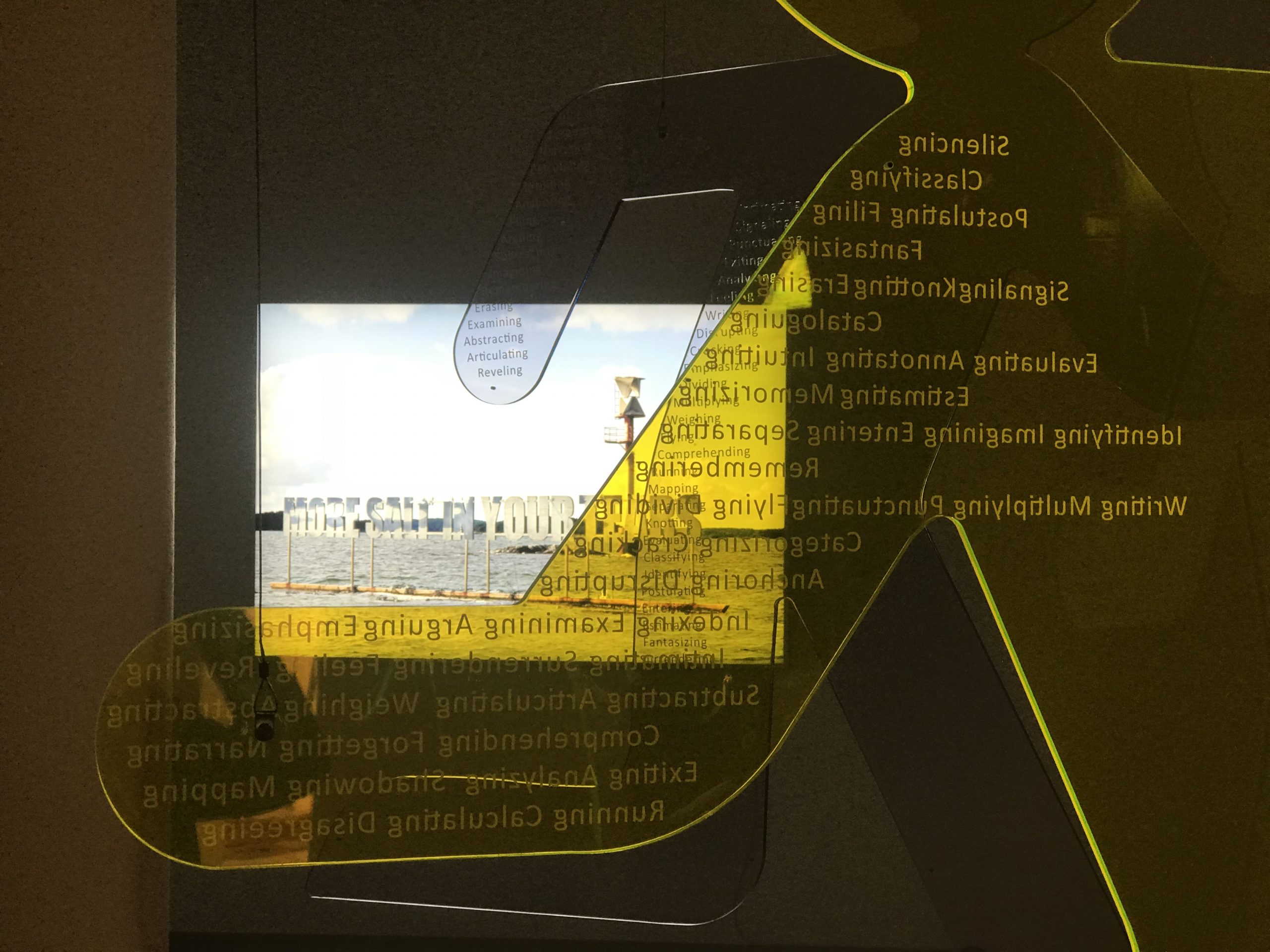
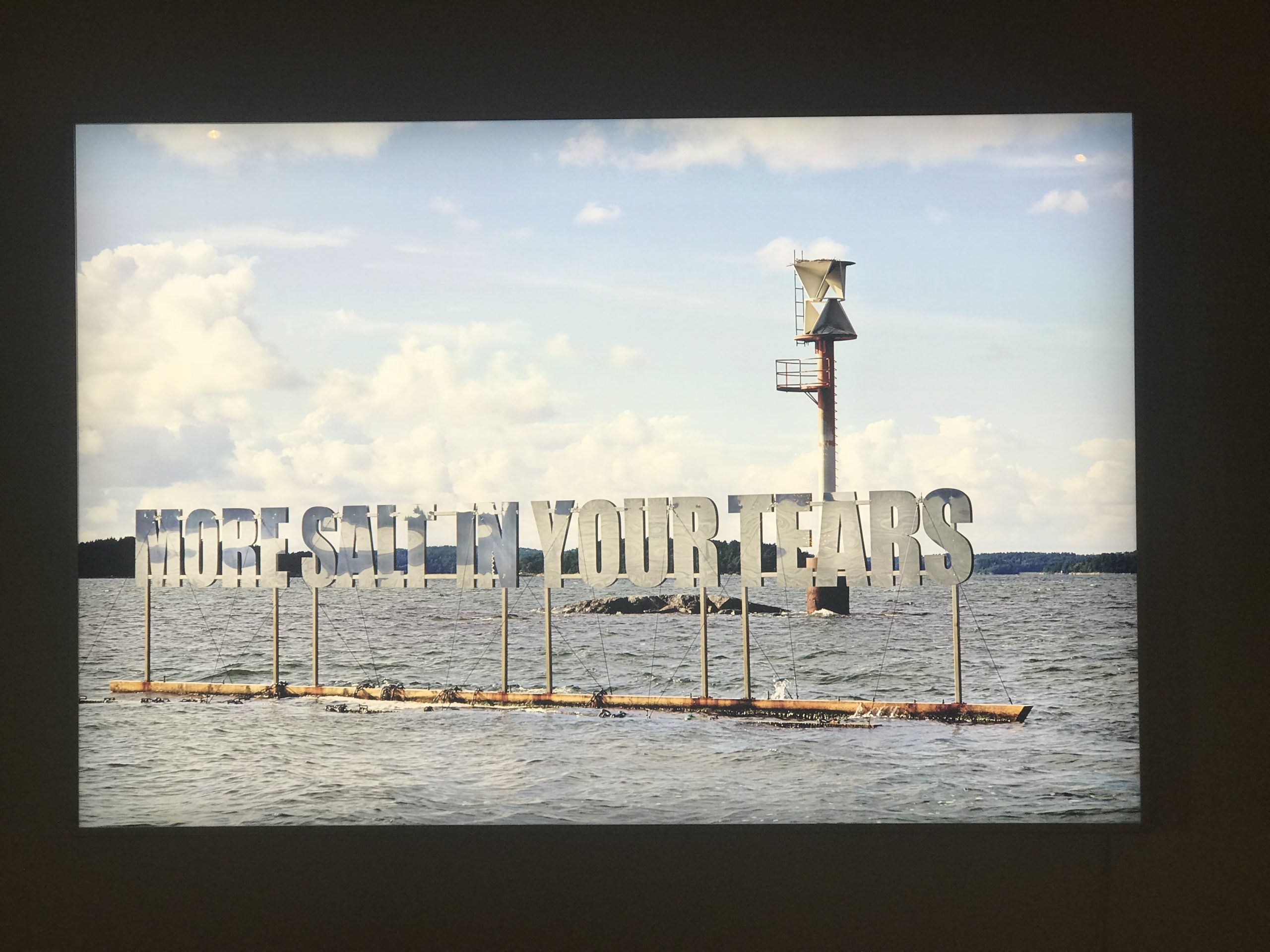
Unusually Adrift from the Shoreline
Wood, MDF, light fitting, acrylic sheet, vinyl, silver paint, 4 x 1.3 m
A cinema invites us to see in the dark. A lighthouse helps a sailor see where he is. Both work with beams of light. Both cause observers to question their own coordinates. Visitors to the old cinema of Sandnes stumble upon the uncanny sight of a great lighthouse, unusually adrift from its shoreline.
The abandoned cinema, with its wave-like stepped floor, has become an echo of the sea, and the lighthouse has apparently erupted there, as if from the depths, to scan the aquamarine darkness with a solitary, roving beam. The cries of whales ring out in Sandnes’ solid streets and shopping malls, as if the buried world of water has reclaimed the city, and great submarine creatures summon people to revisit its submerged places.
Unusually Adrift From the Shoreline is a work about darkness, light, navigation and memory. Centred on a cinema lost to time, it is intended to prompt unfamiliar thoughts in the city. Thoughts and feelings about the pleasures and the hidden perils of losing oneself: in movies, at sea, and in the oceanic expanse of time.
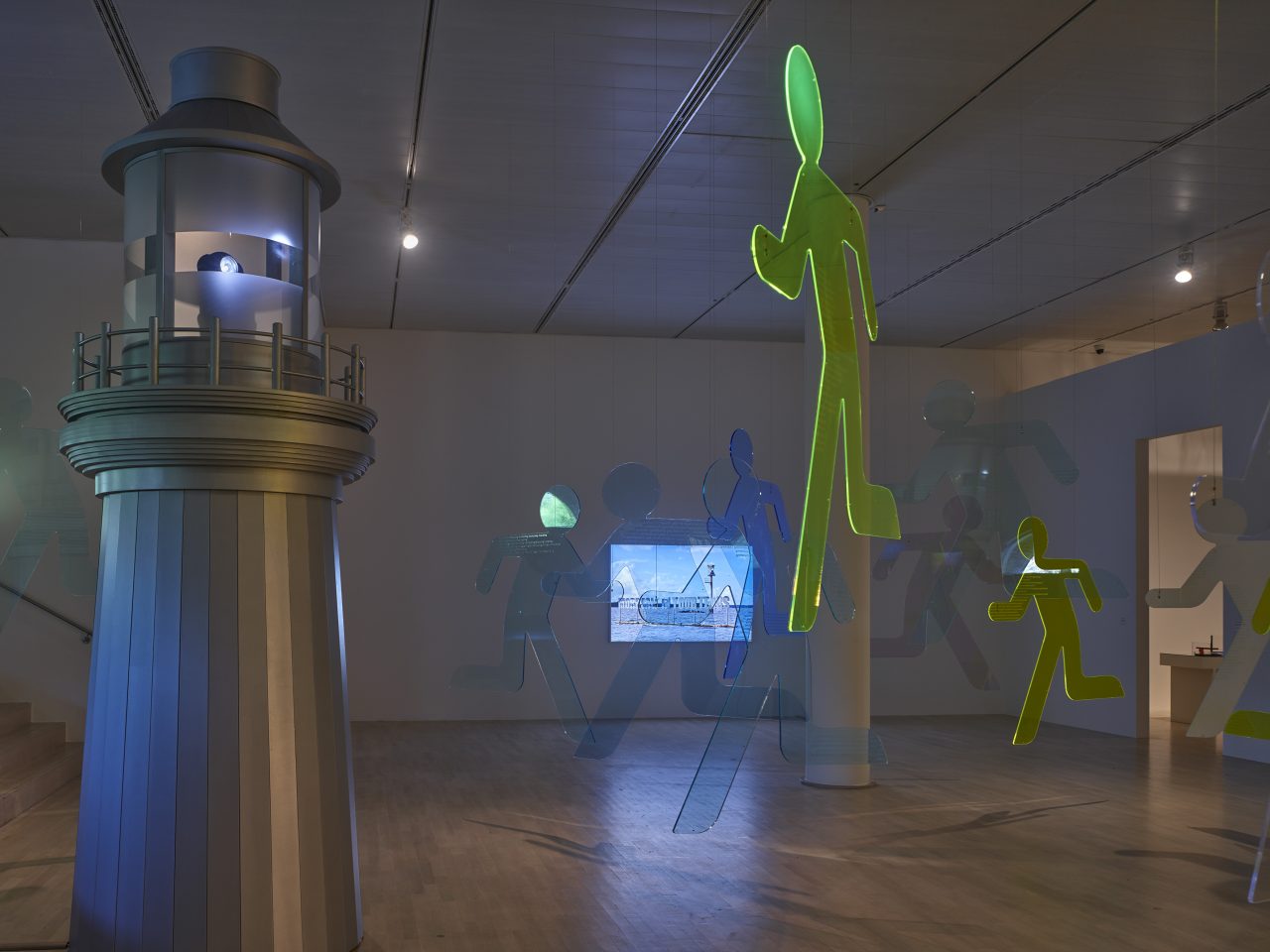
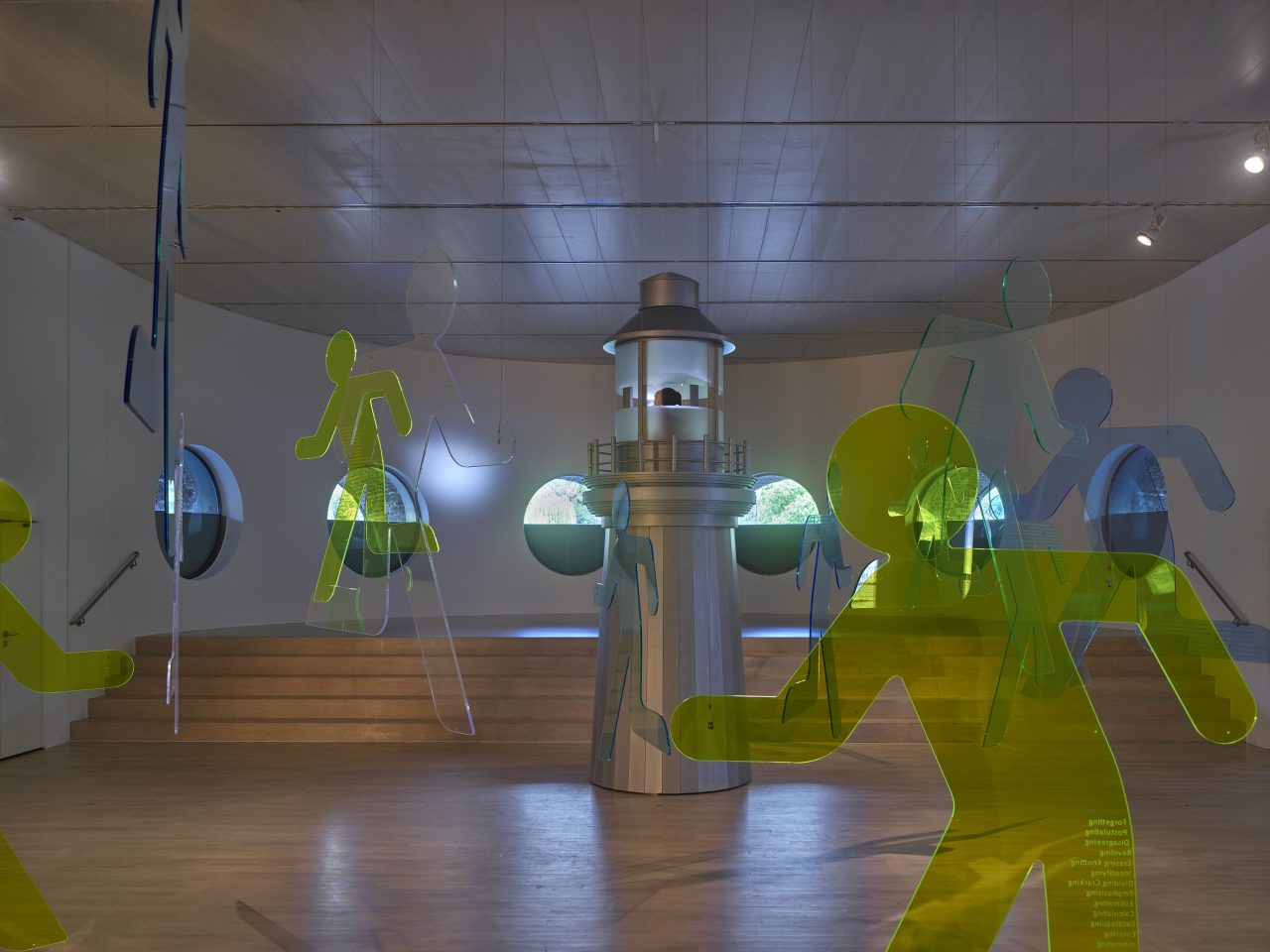
LED light, steel, matte automotive paint, 55.9 x 203.2 x 15.2 cm
While retrieving the time gained in searching for all that is lost and found one can admit to a condition that one suspects that one shares with most people in the world today, of being lost, in search of time.





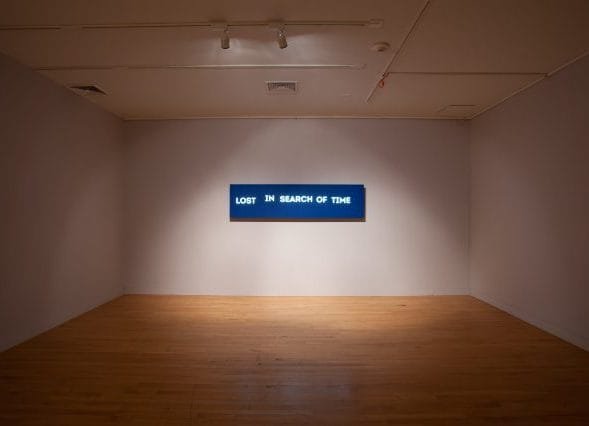
2 synchronized video projections with sound, 18’ 32”
“Strikes at Time” is a lucid dream, readings from an occasional anonymous journal, and a long walk at the edge of the city of the night. In that no man’s land annexed by the awakening mind from the fatigue of the labouring day, the work weaves together a disquisition on time in the form of a discreet annotation on the philosopher Jacques Rancière’s ‘The Nights of Labour’, together with renditions of the found text of a worker’s diary by the CyberMohalla Ensemble, a group of unorthodox proletarian urbanists that Raqs has been in dialogue with over a decade. The shadowy presence of a Yaksha and Yakshi – guardians of wealth in Indic mythologies – stands watching over the work, marking time with questions.
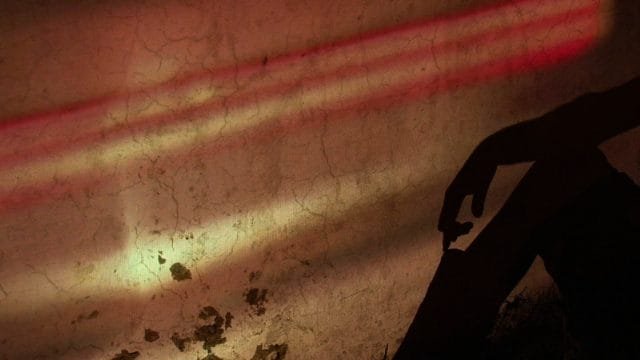
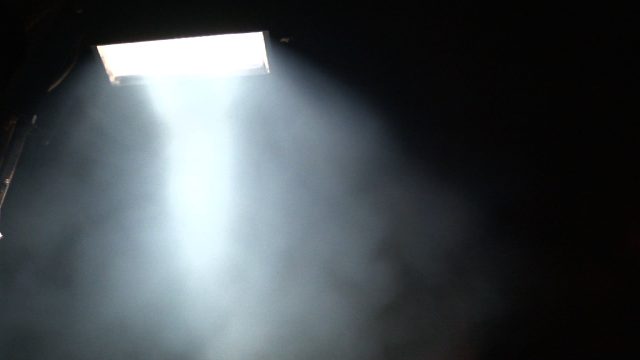
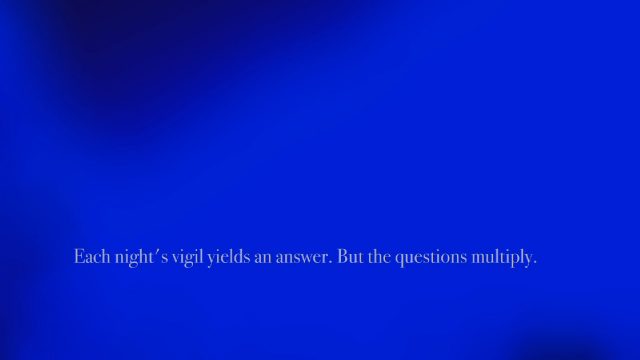
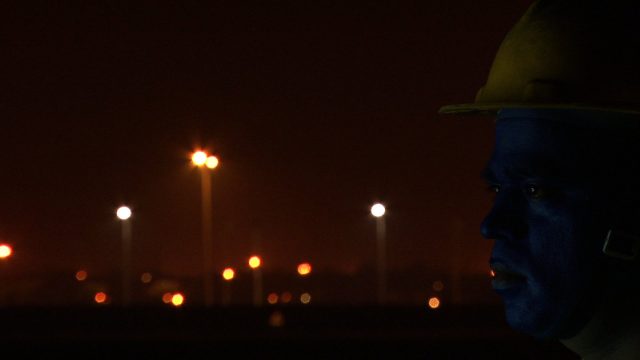
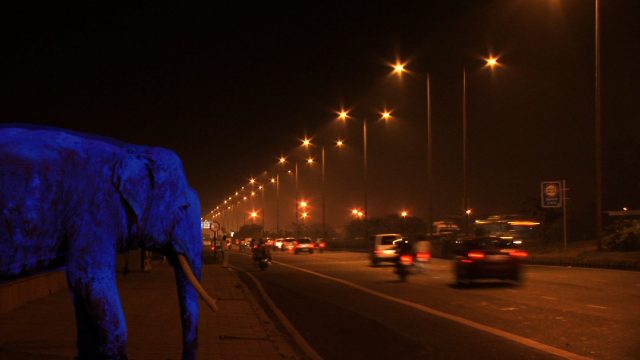
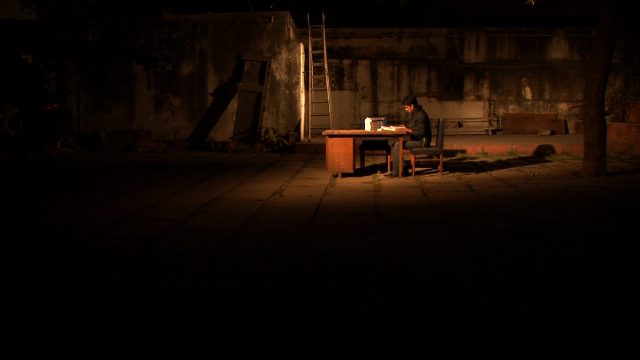
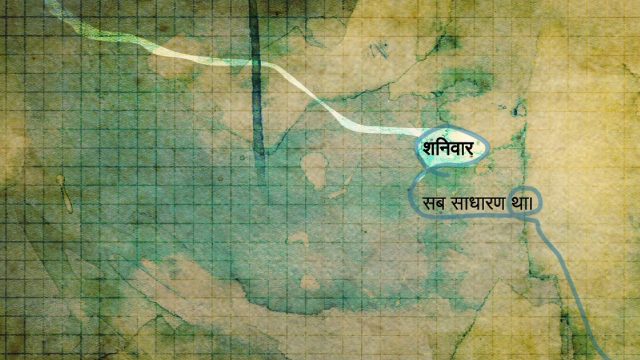
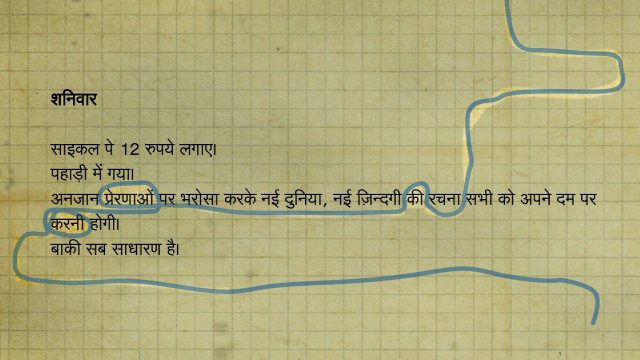
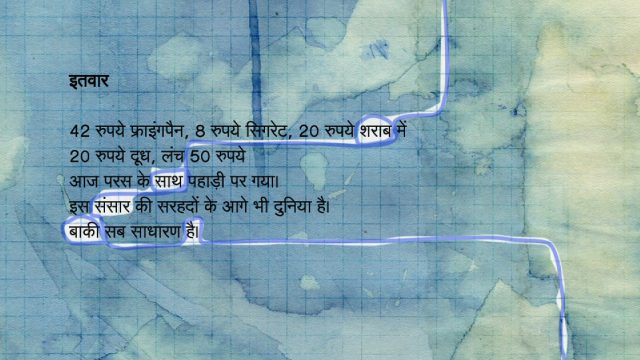
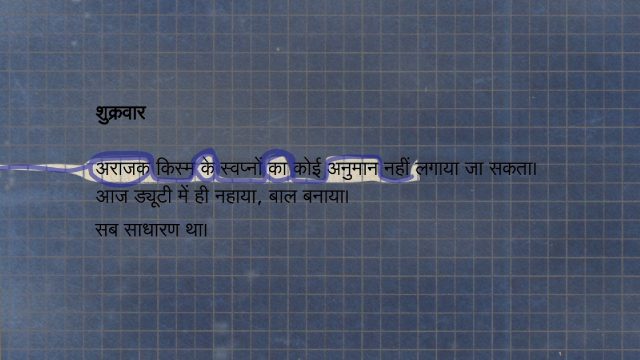
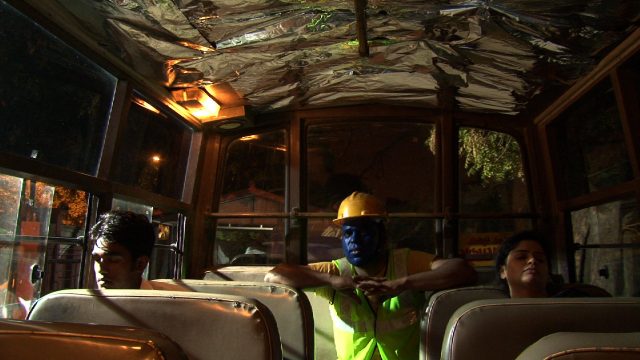
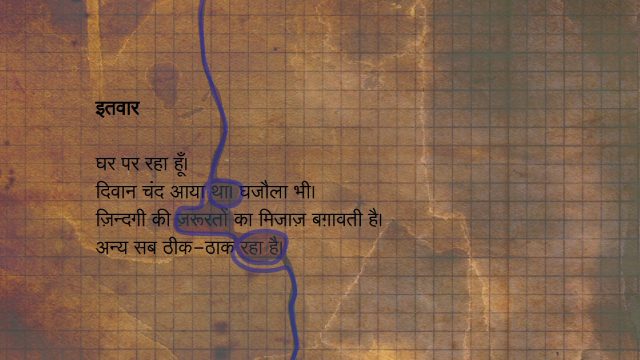
9 fibreglass sculptures on bitumen-coated wood, 9 pedestals with acrylic polymer plaque
Coronation Park, an assemblage of plinths, sculptures and plaques that invoked the aesthetic of public garden sculptures. The sculptures are fragments of ceremonial regalia, residues of authoritative stances, and the accoutrements of dematerialized power —and they commemorate neither victory nor defeat. They offer nine meditations on hubris.
Coronation Park echoes and amplifies the accidental epiphany that Raqs experienced a long time ago about the nature of power at the eponymous derelict quasi-ceremonial space where relics of the British Raj are kept for the consideration of an absent public at the outskirts of Delhi.
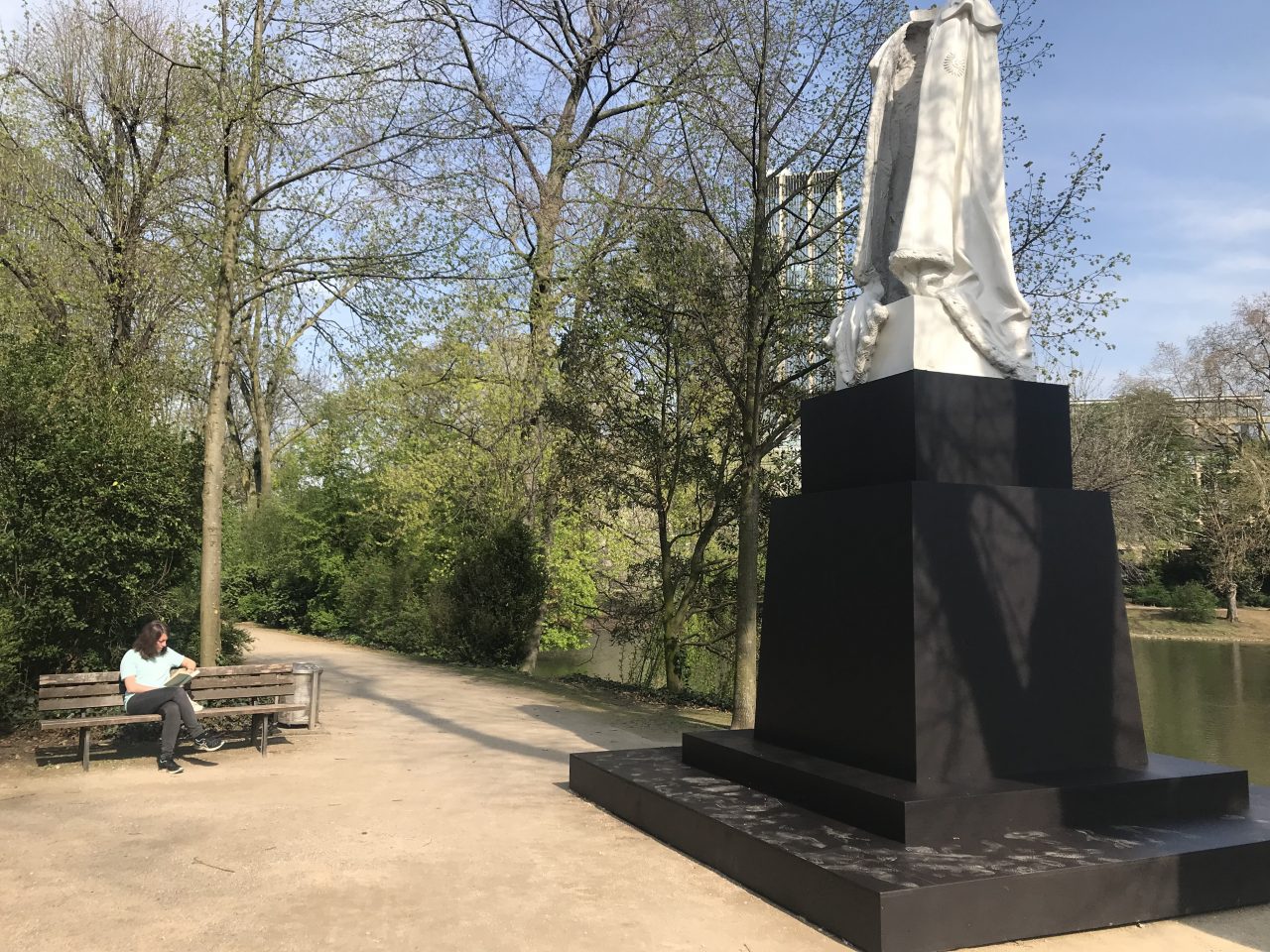
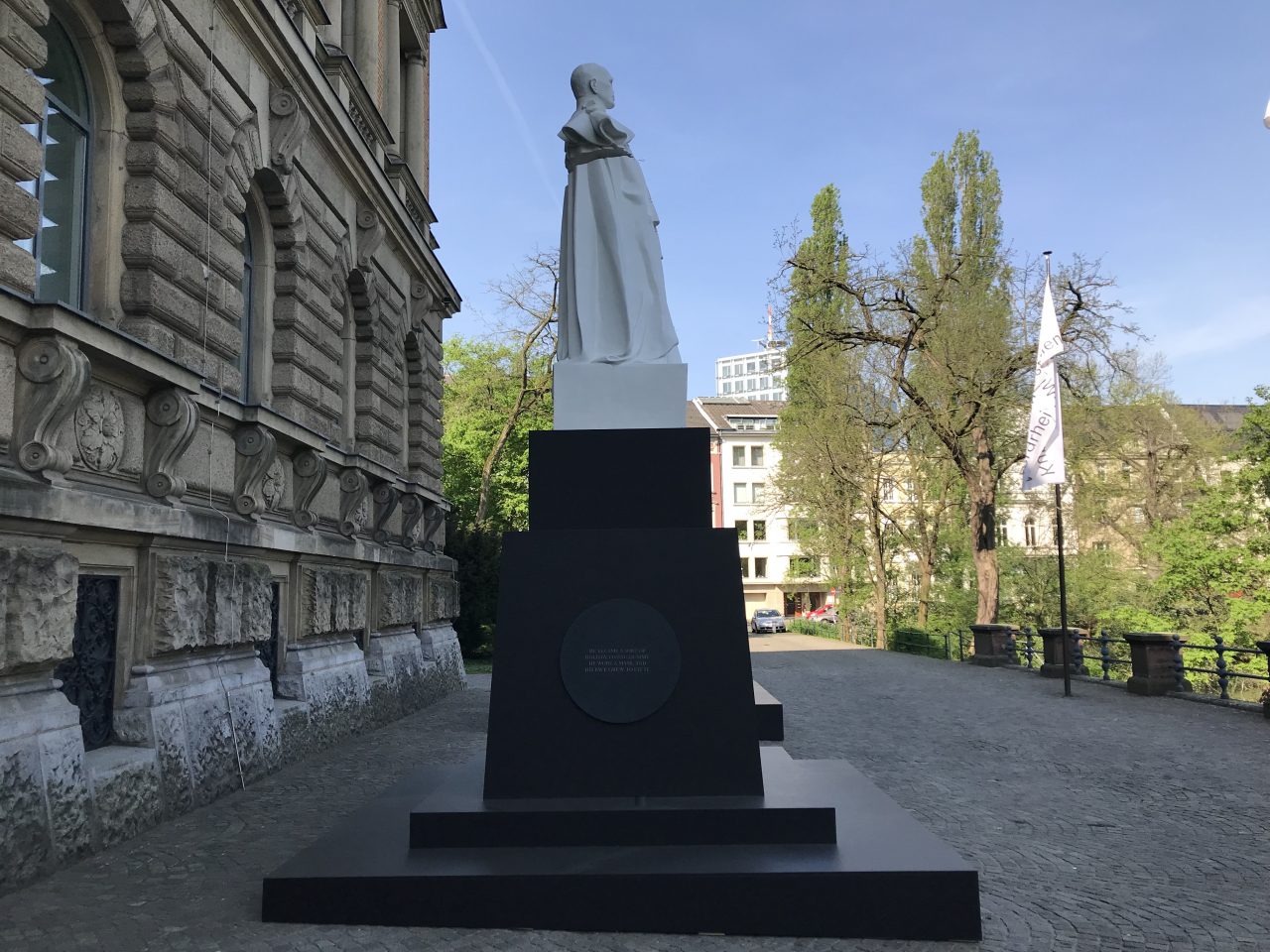
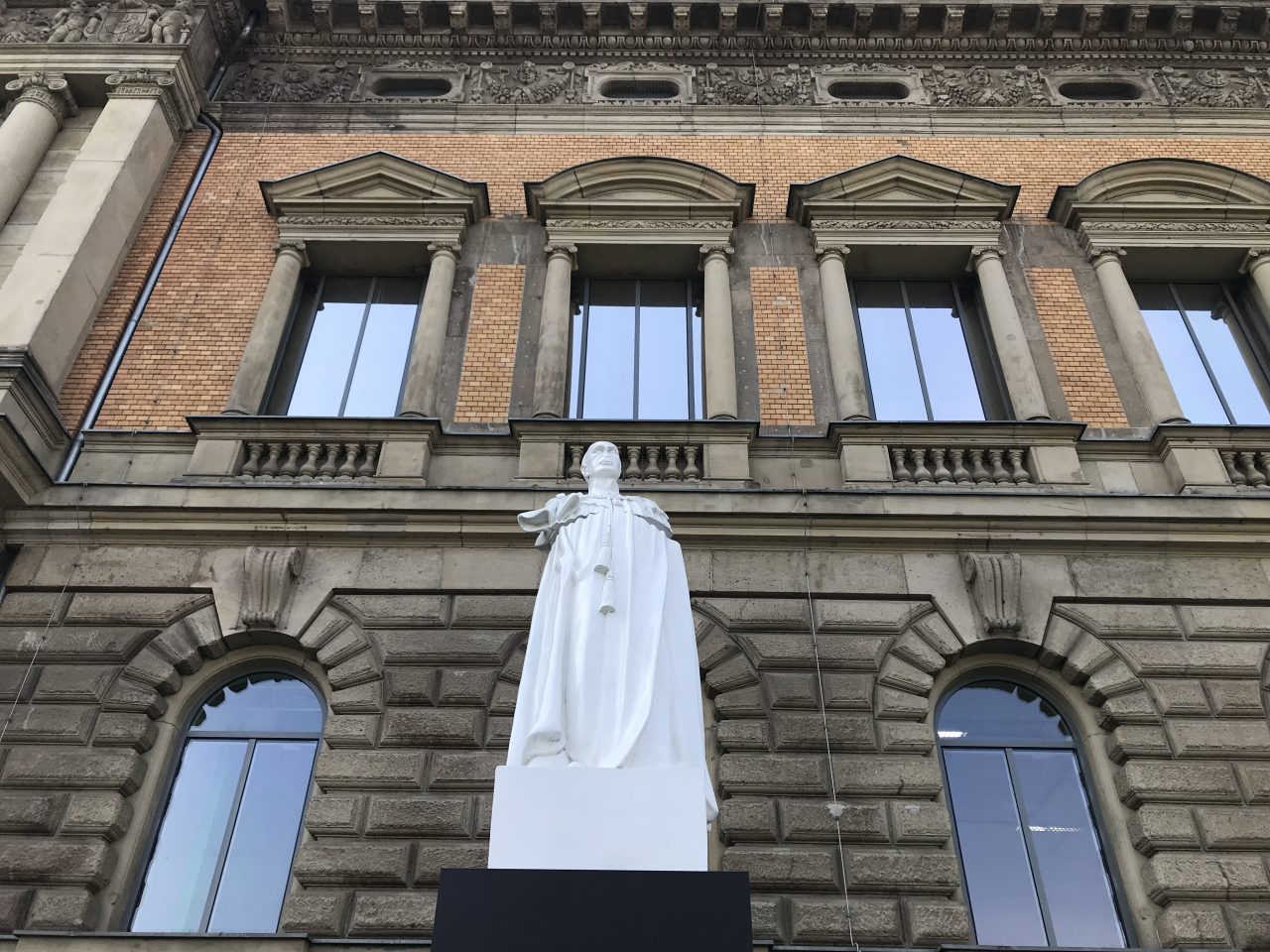
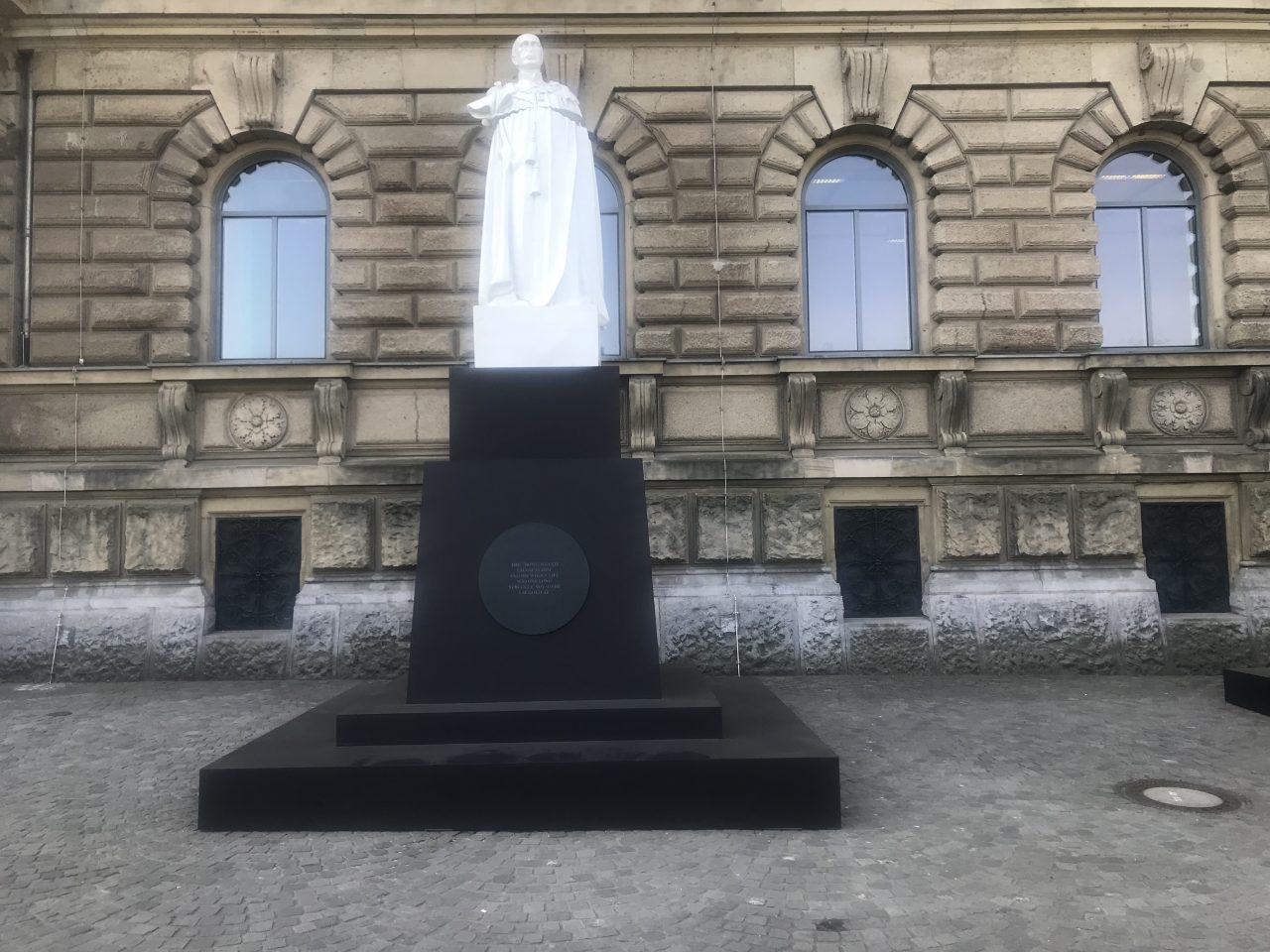
Lost Birds
Video
There has been a change of plan features enigmatic images of aircraft abandoned in a dessert blossoming after a rain shower. The images are poised in a delicate balance between accumulating debris and fragile possibilities.
Sometimes, adjustments have been made. Schedules need calibration. There are contingencies, questions, obstinate demands, weak excuses, strong desires. Journeys are abandoned midway. Airplanes sit on wooden platforms in a wilderness like widows on a funeral pyre. Flights are grounded, engines rust, propellers turn idly. The debris of the unrealizable accumulates on the surface of the eagerly expected. Time to pause, to take stock. Sit still and let a conversation begin. There has been a change of plan.
LED light, mirrored ACP, synch machine, 1.85 x 2.44 m
Marks offer a luminous typographic annotation to the political imagination. The illuminated shapes produced by the array of red light bulbs suggest an arresting configuration of orthographic devices – a question mark and an exclamation sign – that couple to form an echo of the hammer & sickle sign. The work bathes the entrance to the foyer in red light, and finds itself reflected on many of the surfaces that surround it. By having questions marks and exclaimation marks perform the hammer & sickle sign, ‘Marks’ (a play on the name ‘Marx’) reiterates and celebrates the legacy of asking questions and articulating deeply felt human desires.
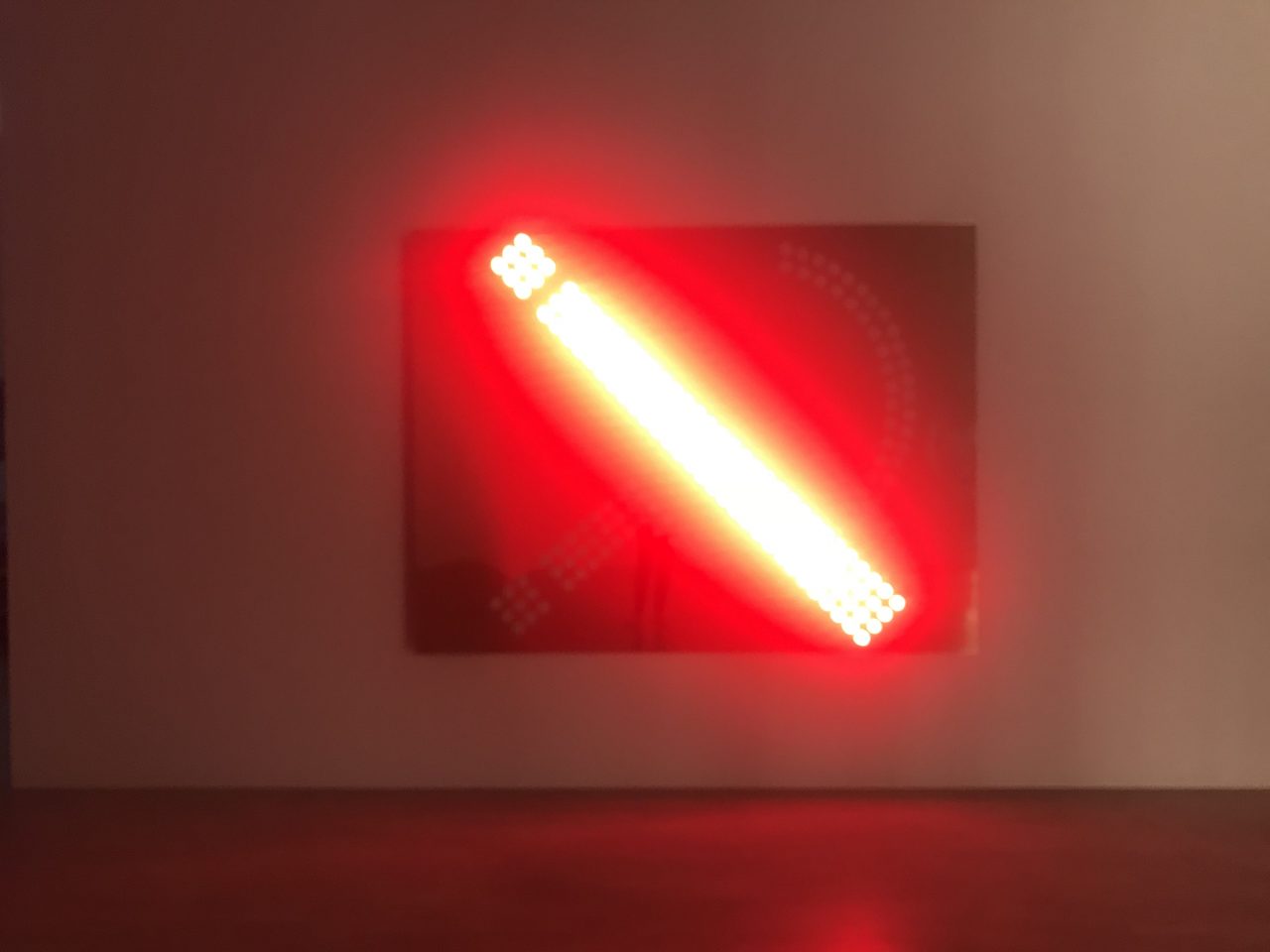
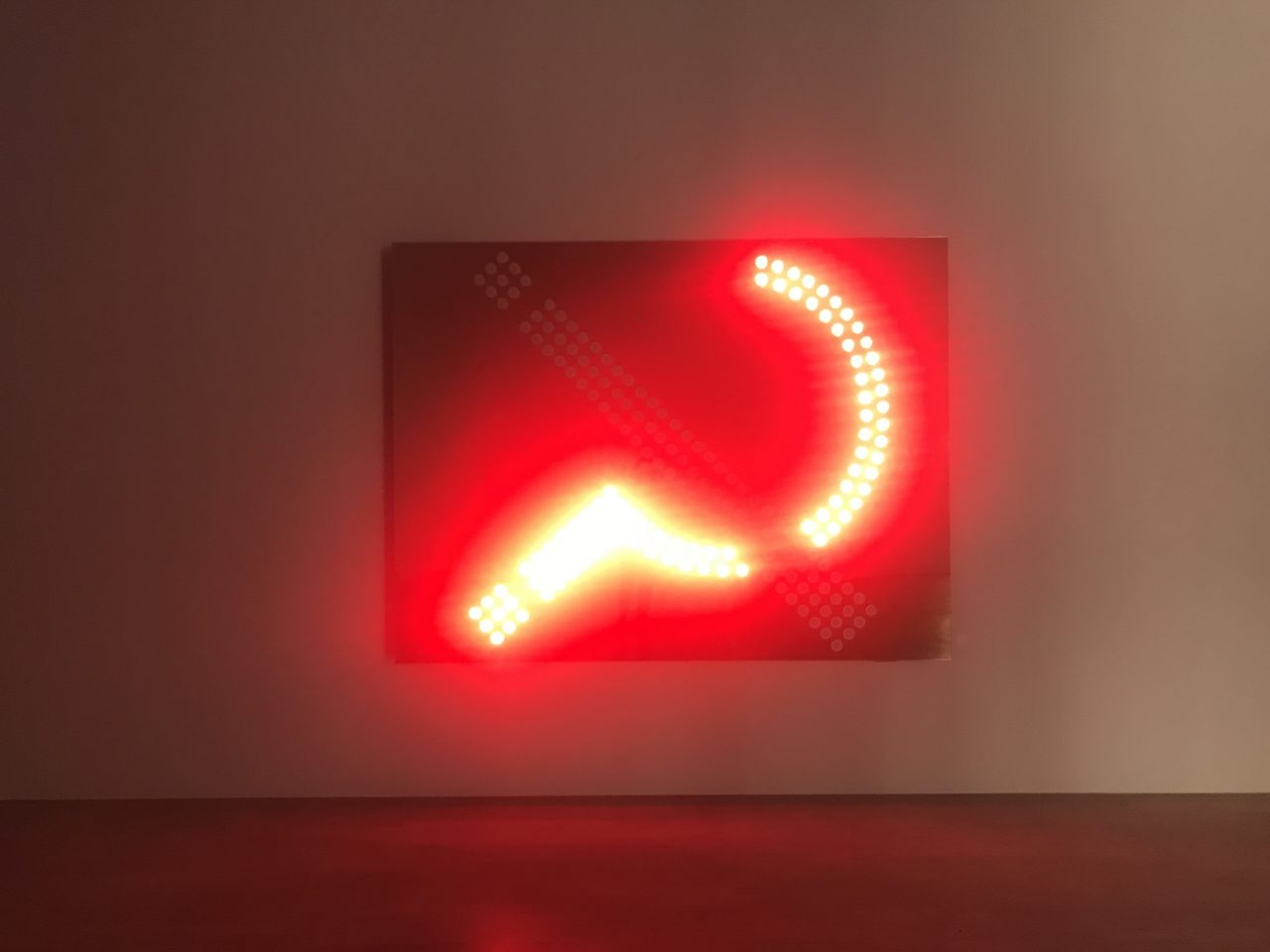
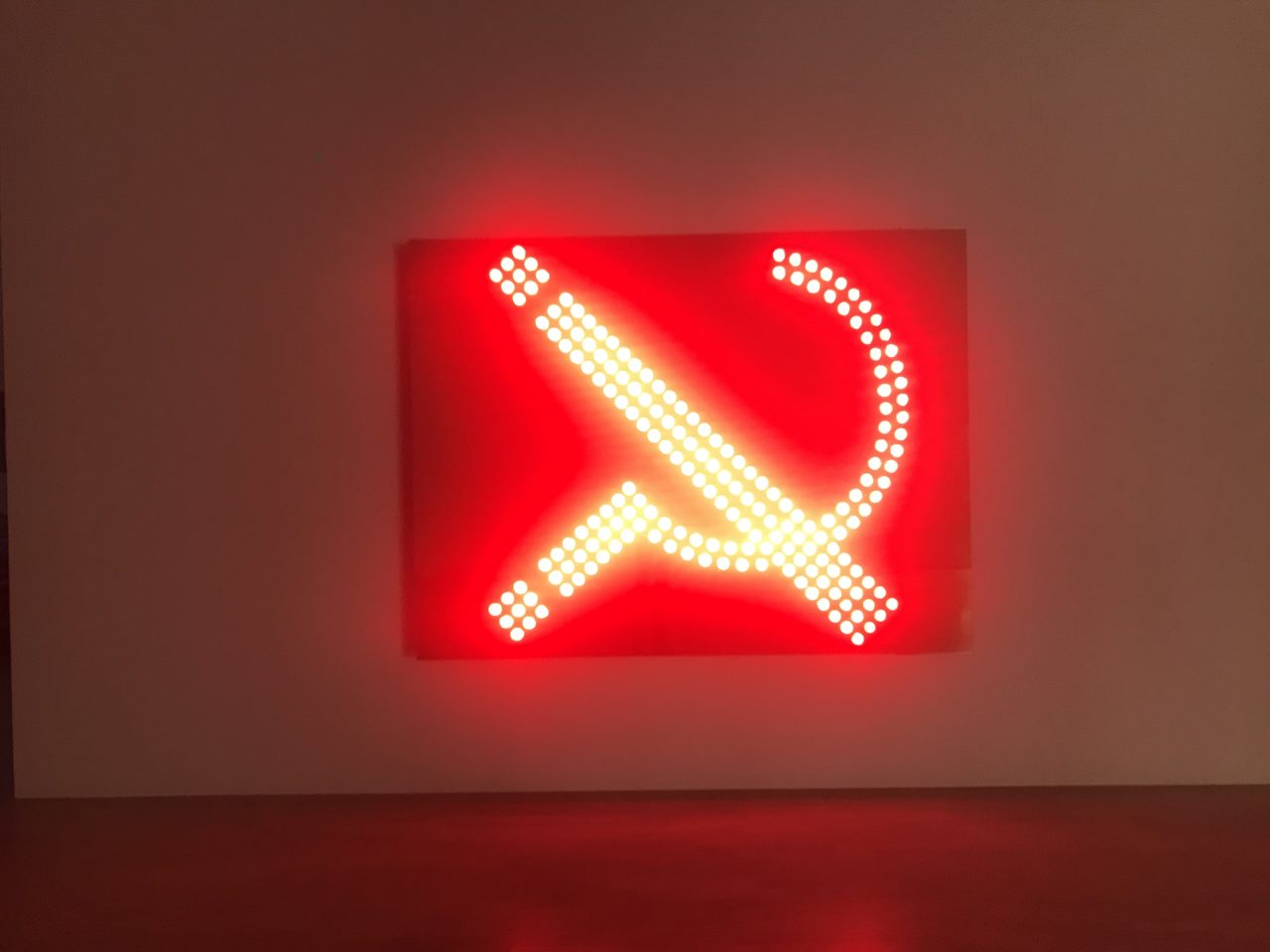
Acrylic, light bulbs, electrical wires, PVC, 1.7 x 1.3 m (per letter)
Revoltage fills the space it occupies with warmth, light, and the charge of an idea that embraces both celebration and rage. It suggests the energy, or “voltage,” of what it means to revolt, to commit oneself to humanity. The letters join to suggest an incandescent hybrid between electricity and uprising – alternately illuminating the words “Revolt” and “Voltage” through a fluctuating electrical current in order to coin a new thought, “Revoltage”. Revoltage registers first as an after-image (the kind we see when we shut our eyes after looking at a strong source of light), and then as a subliminal suggestion within our consciousness to brighten our days with the brilliance of a form of truant, rebel power that refuses to either name itself or be named into domesticity.
A cascade of black and red wiring (anarchy’s traditional colours) makes its way down from the multitude of light bulbs that make up the word, and flows along its length on the ground. The bunched wires merge and divide like a map of the tributaries of a mighty, turbulent river before disappearing into the shadowy darkness behind the work. By representing the transport of the electrical energy that fuels the work, the wires evoke the way in which ordinary people all over the world have flooded their cities in recent times (in Cairo, New York, Athens, Madrid, Moscow, Tel Aviv, and elsewhere), like rivers in spate, electrifying global consciousness with the actualisation of a new politics, carrying with them the charge of a new mode of being human.
With Revoltage, Raqs have begun writing a new glossary for these times.
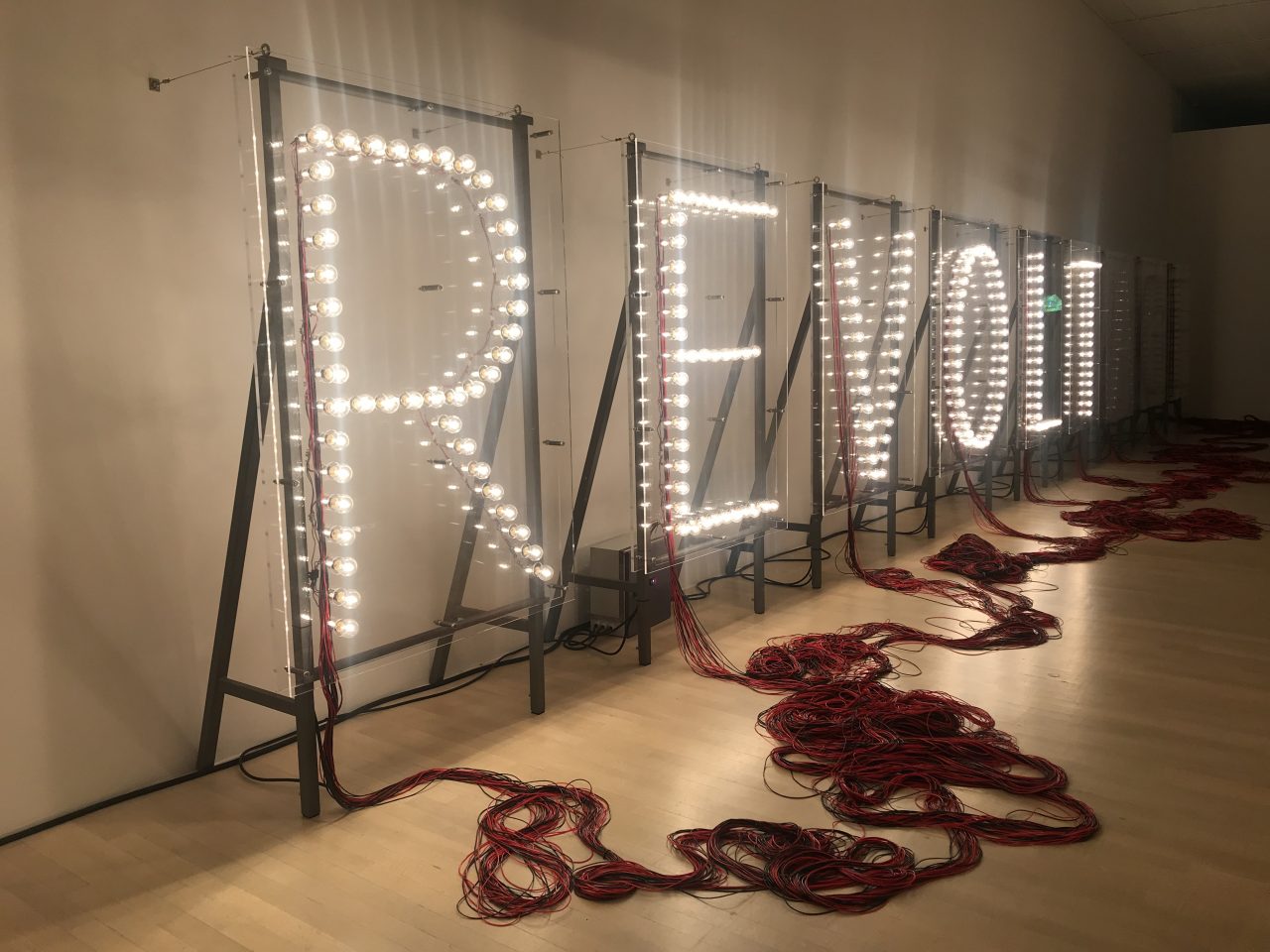
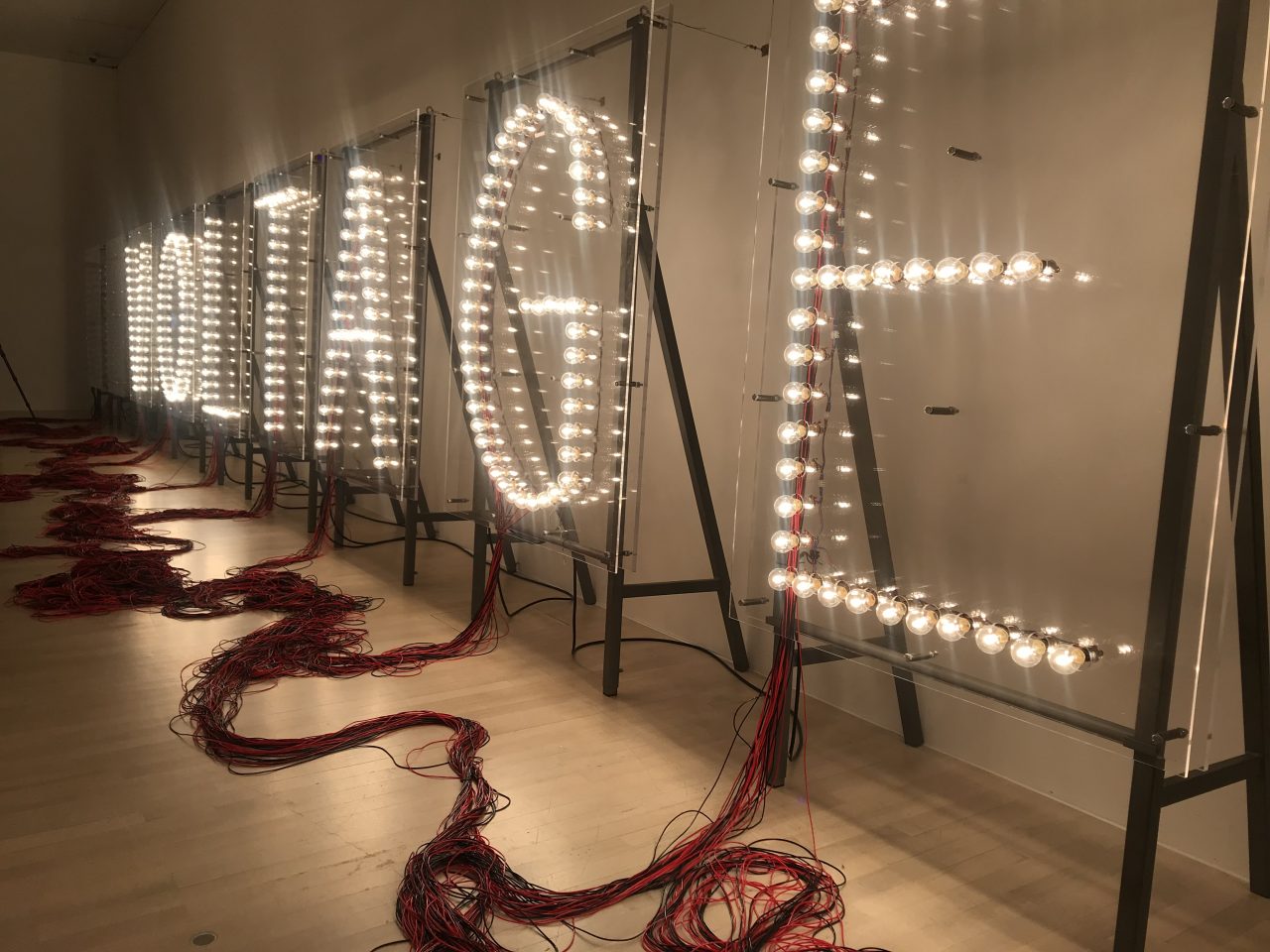
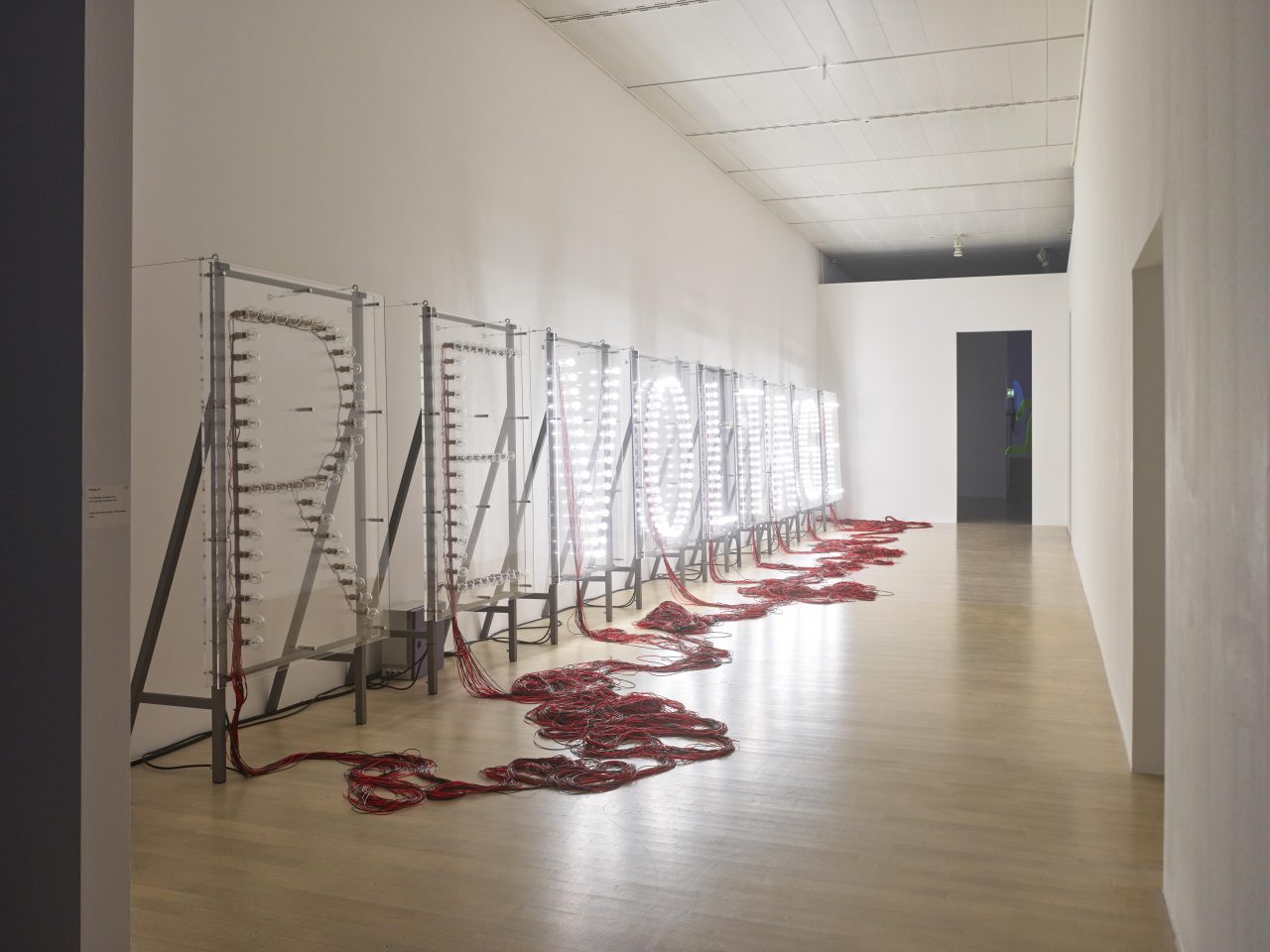
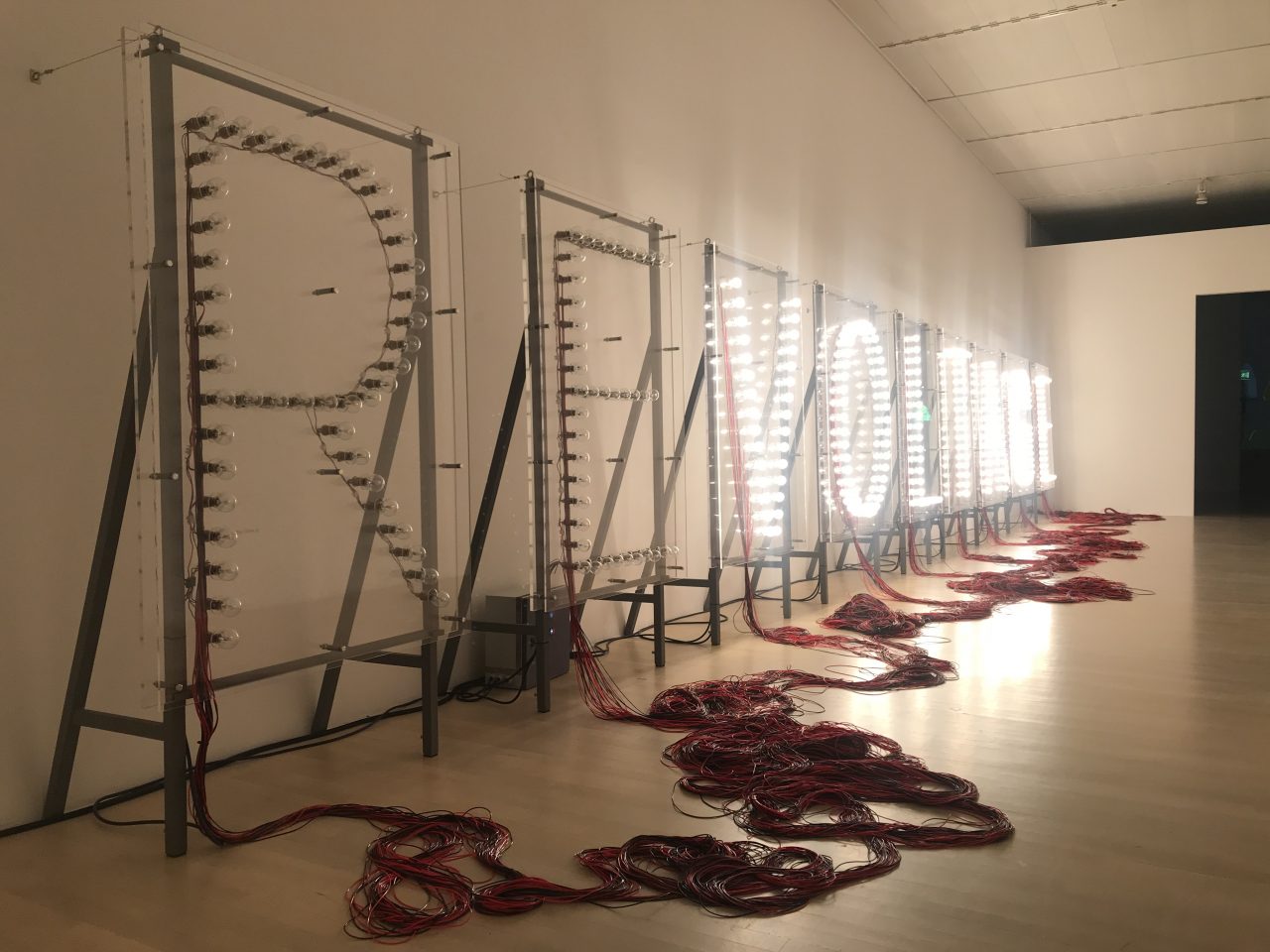
Single-channel video projection, 47″
In every sum figured by power, a remainder haunts the calculation. Not everything adds up. A people are never equal to a listing of their bodies. They are something more and something less than a population. Counting counter to the reasons of state, Raj Konai, a peasant from nineteenth century Bengal, the owner of the floating trace of a disembodied hand indexed in a distant archive, persists in his arithmetic. The handprint of Raj Konai was taken in 1858 under the orders of William Herschel – scientist, statistician, and at the time, a revenue official with the Bengal government. It was sent by Herschel to Francis Galton, a London eugenicist and pioneer of identification technologies. It is currently in the custody of the Francis Galton Collection of the University College of London. This is where the Raqs collective first encountered the image of Raj Konai’s hand. Fingerprinting experiments, and later technologies, all began with this handprint. India has now embarked on a nationwide Unique Identification Database (UID) and plans to have its billion soon counted and indexed.
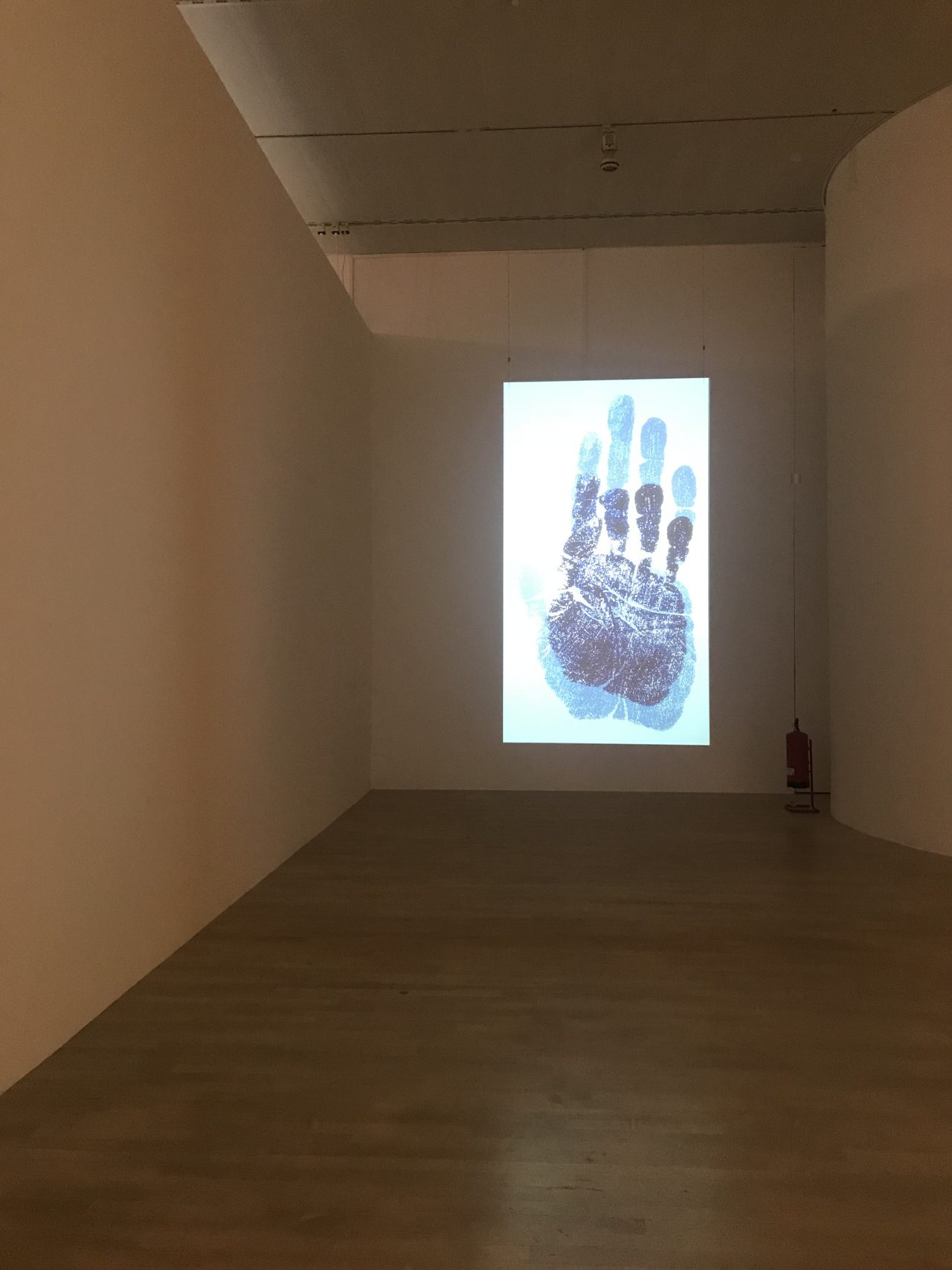
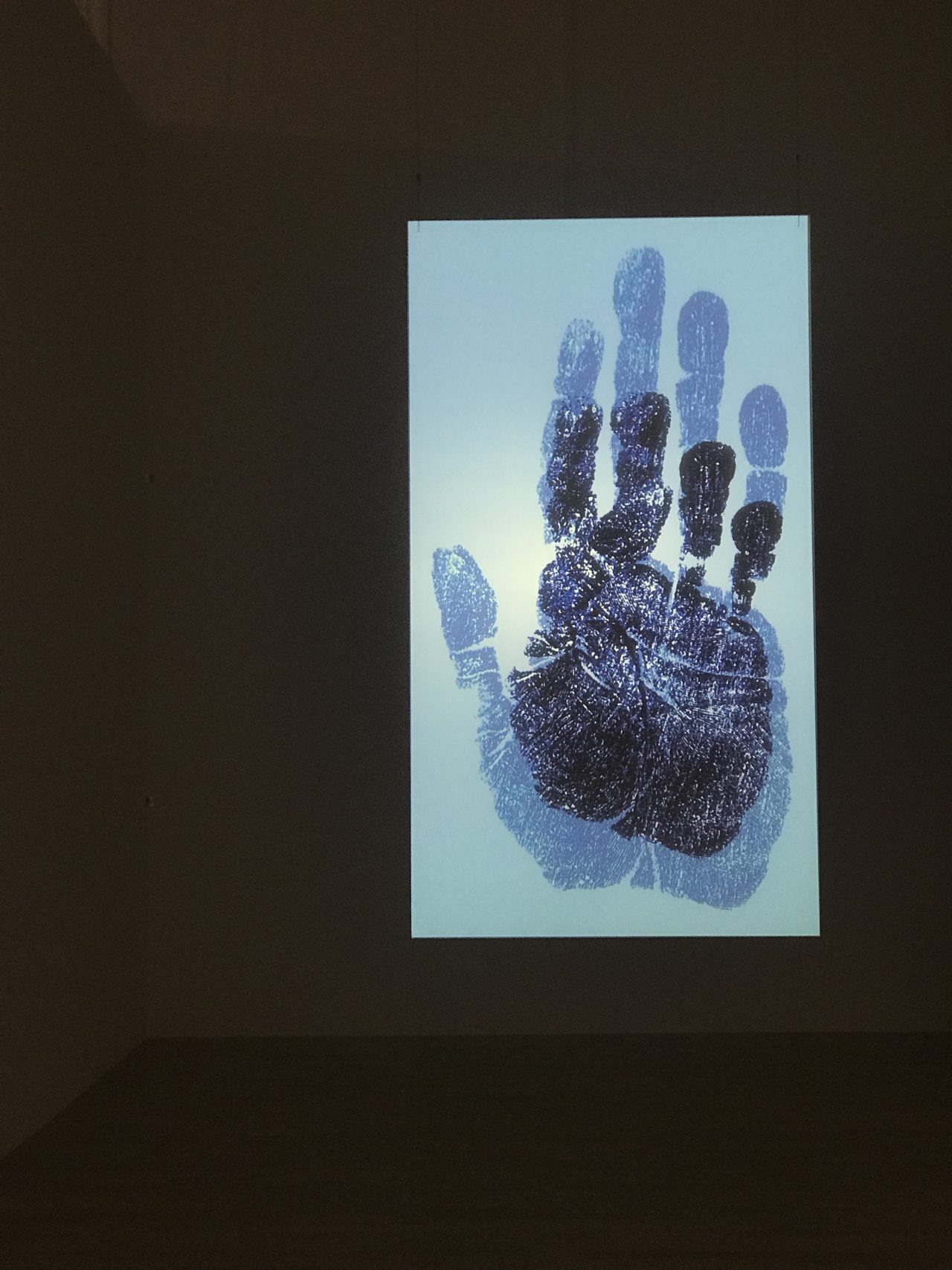
Looped video, 7’48”
Henri Cartier-Bresson took a photograph of a bank run in Shanghai in December 1948: A crowd of people desperate to get their money out of a bank in order to buy gold in anticipation of an imminent collapse of the value of paper money in the lead up to the take-over of Shanghai by the People’s Liberation Army.
Every bank-run is propelled on the currents of a self-fulfilling prophecy: As people lose confidence in the value of money, they begin withdrawing money from banks in order to try and convert it into gold. This leads to a collapse of a bank’s worth; panic spreads between banks. And so, cause becomes effect becomes cause. The anticipation of the future produces conditions in the present that lead to the anticipated future. Time folds in on itself like a snake biting its own tail.
In revisiting and re-staging Cartier Bresson’s photograph in Shanghai, Raqs meet the conditions of the self-fulfilling prophecy invoked by the event captured in the original image. Cartier-Bresson’s decisive moment breaks its banks and seeks the custody of other hands. Midwived by other eyes and cameras, the image re-incarnates as its own breathing and vivid clone, close to where we are today. The memory of one moment of crisis is transposed on to the reading of another. Time folds in on itself, again.

Perspex blocks with acrylic paint and etched text, dimensions variable
36 Planes of Emotions extends the palette of emotions to include states of collective potential. These are embodied in an assemblage of phrases, surfaces, and transparencies that enlist a cluster of invented collective nouns. The nouns etch enigmatic, invented states of being and emotions on to transparent acrylic surfaces. Light, words, perspex hues, and refractions produce their own whimsical annotations. The list of emotions is building upon a medieval Sanskrit manual of aesthetics, as well as the understanding that no one experiences a single emotion singularly – all affect is layered and multiple. Raqs make new collective nouns to hint at this complexity.
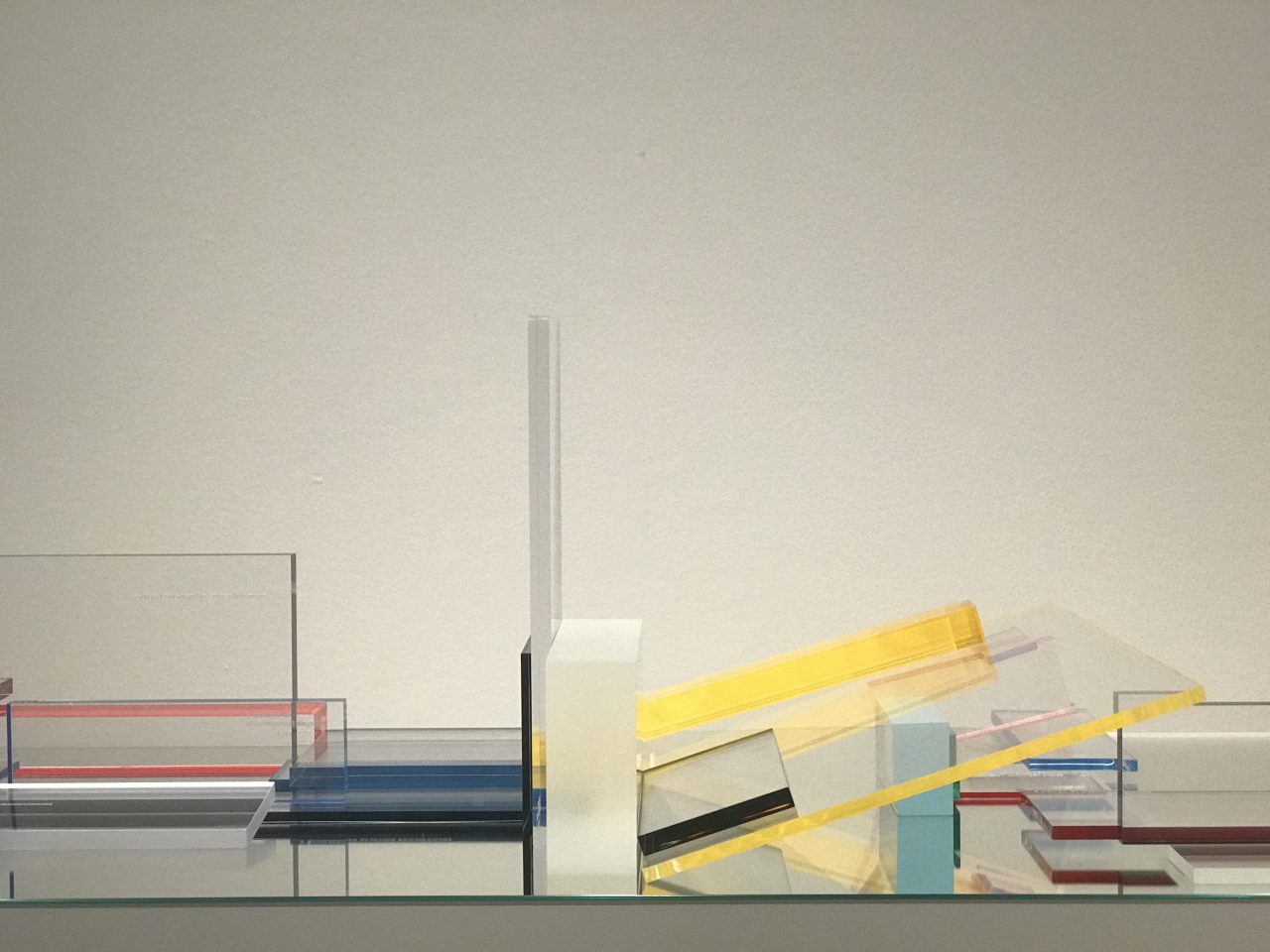
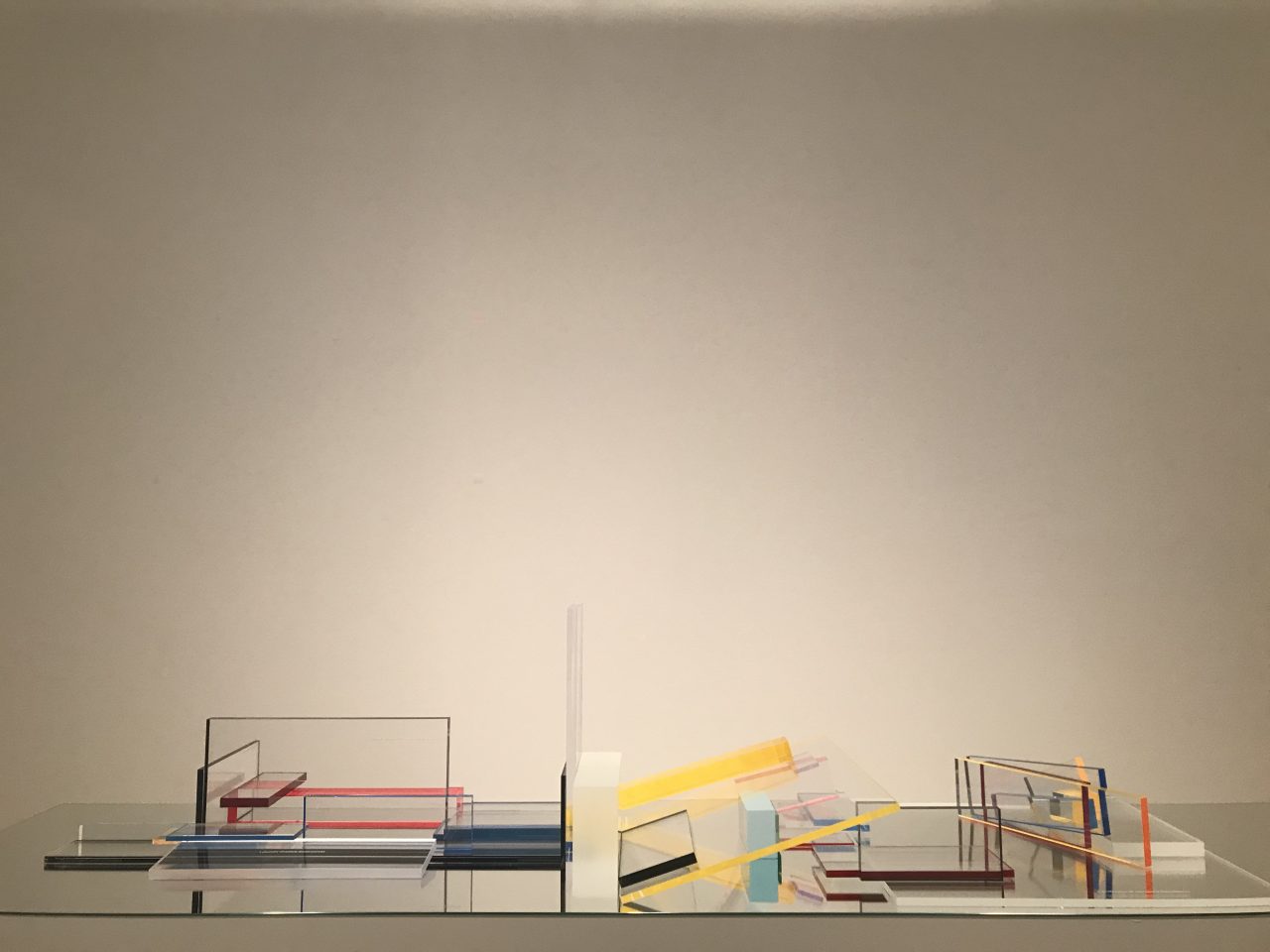
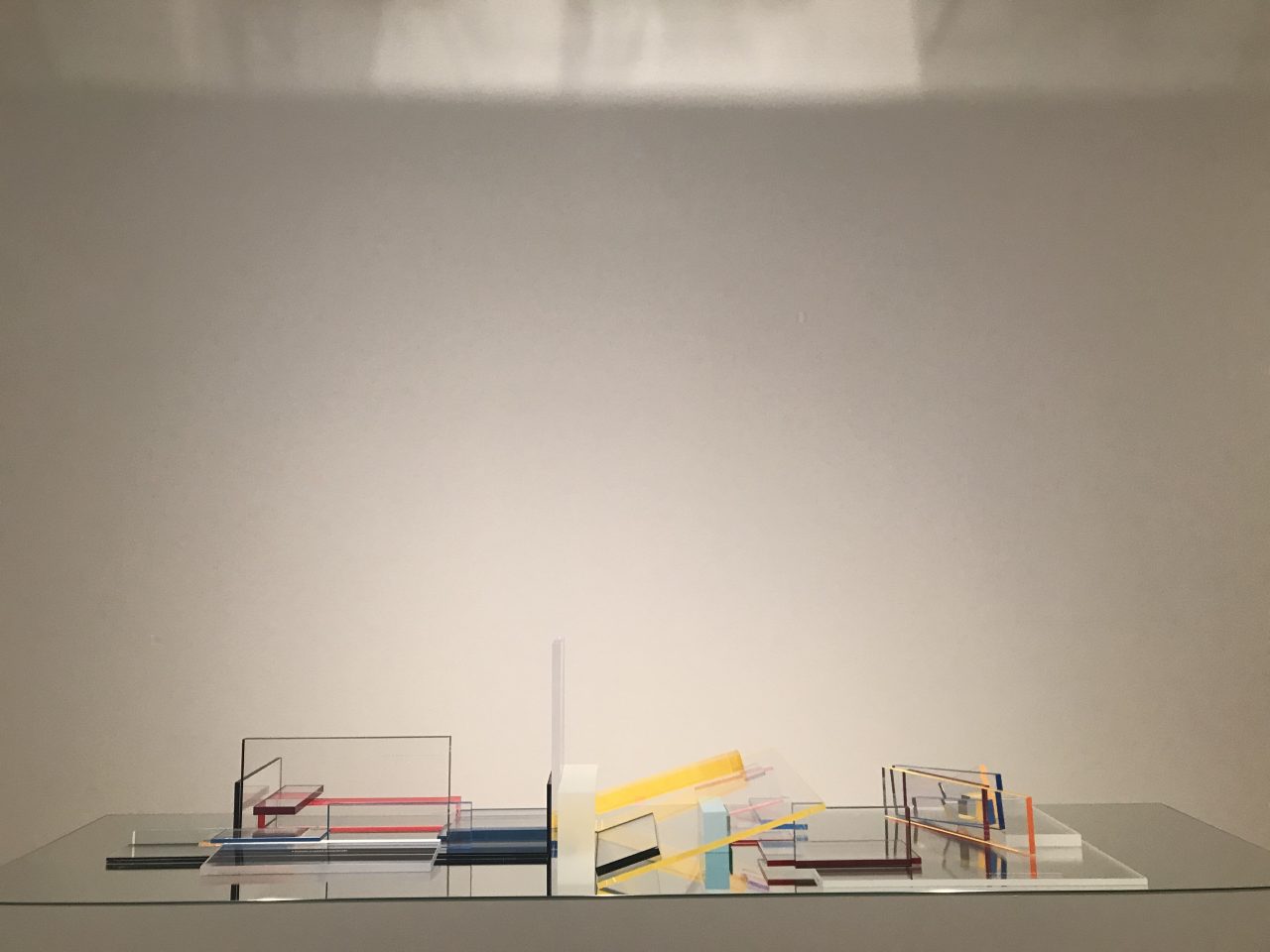
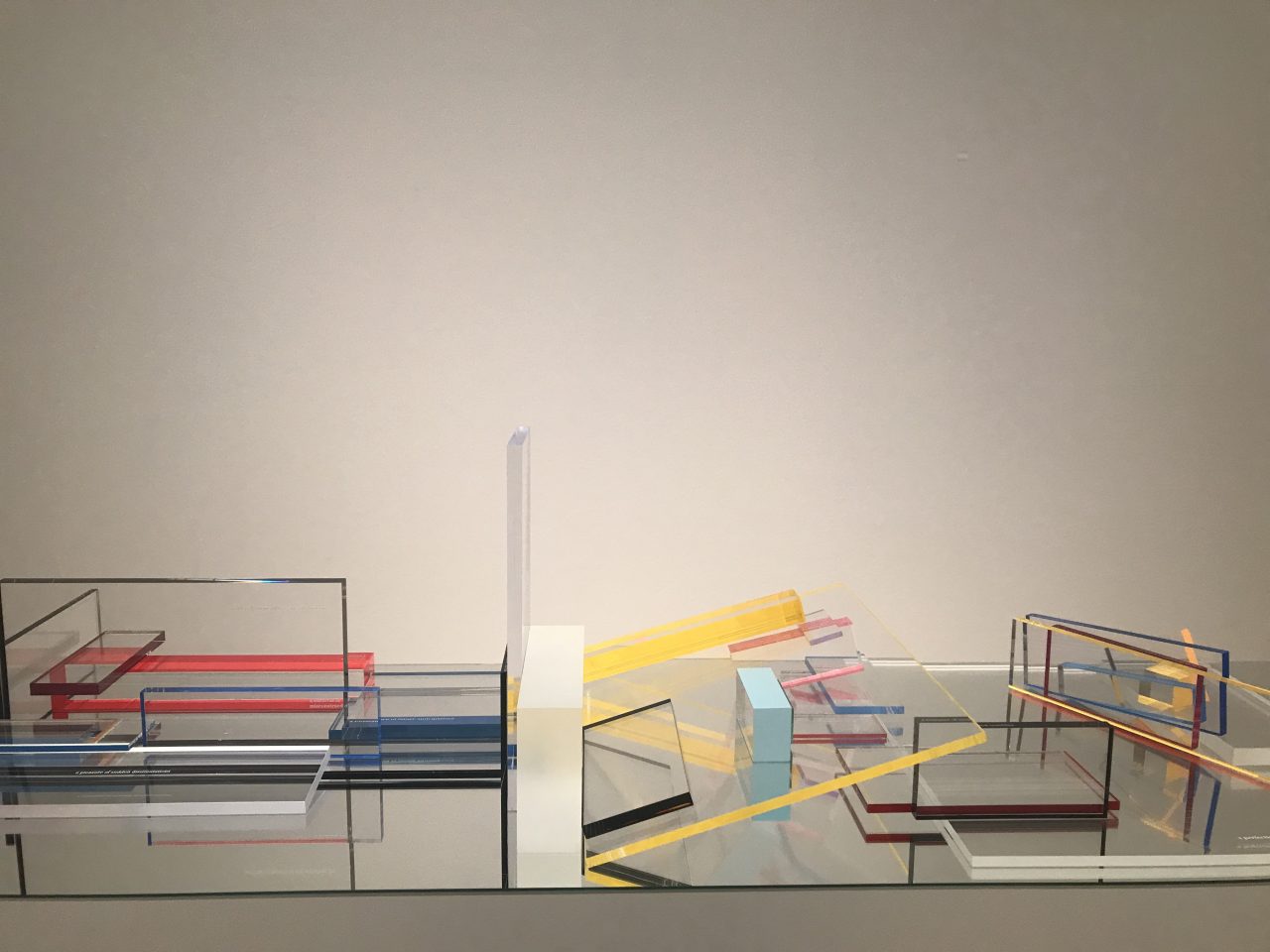
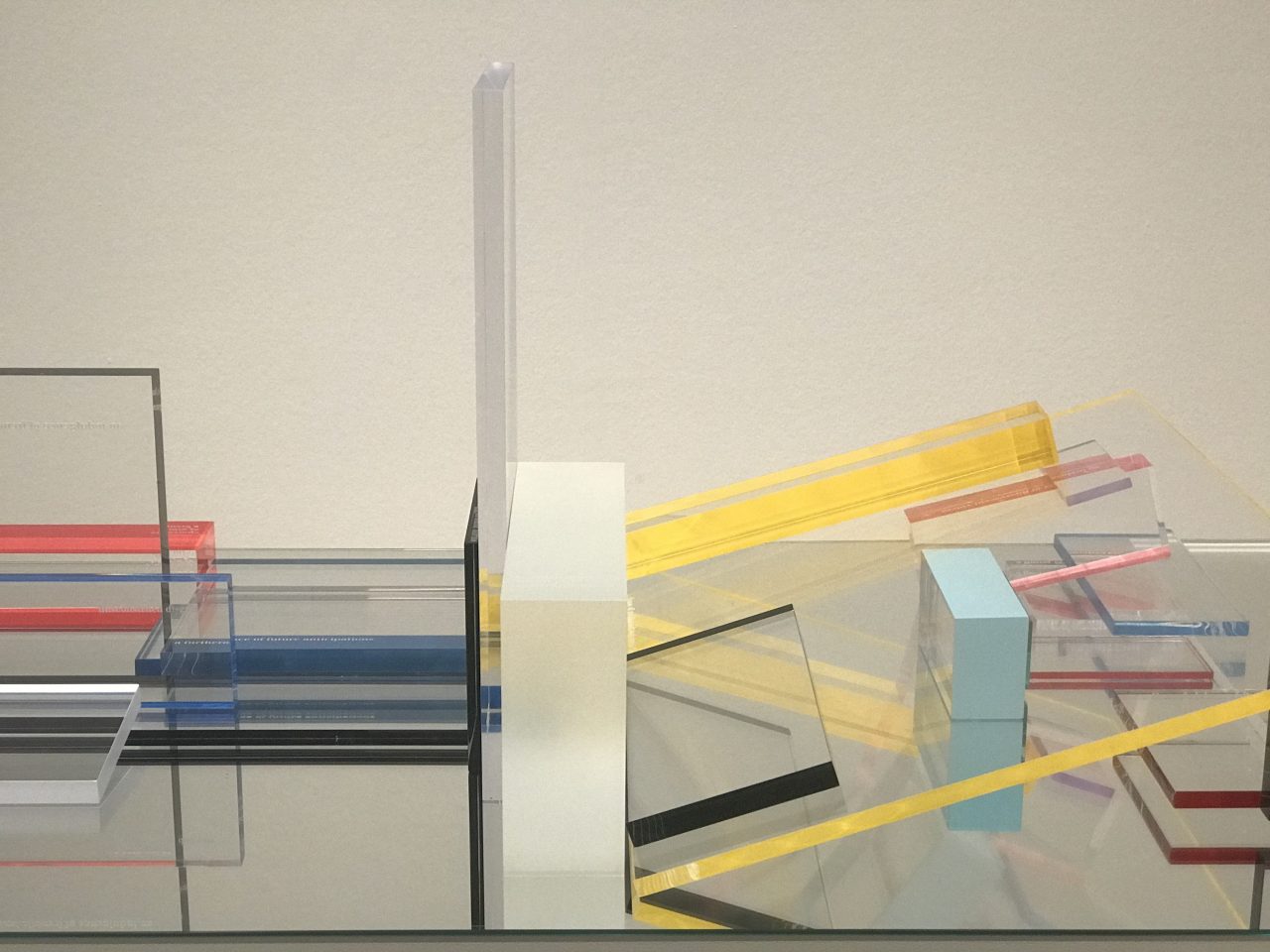
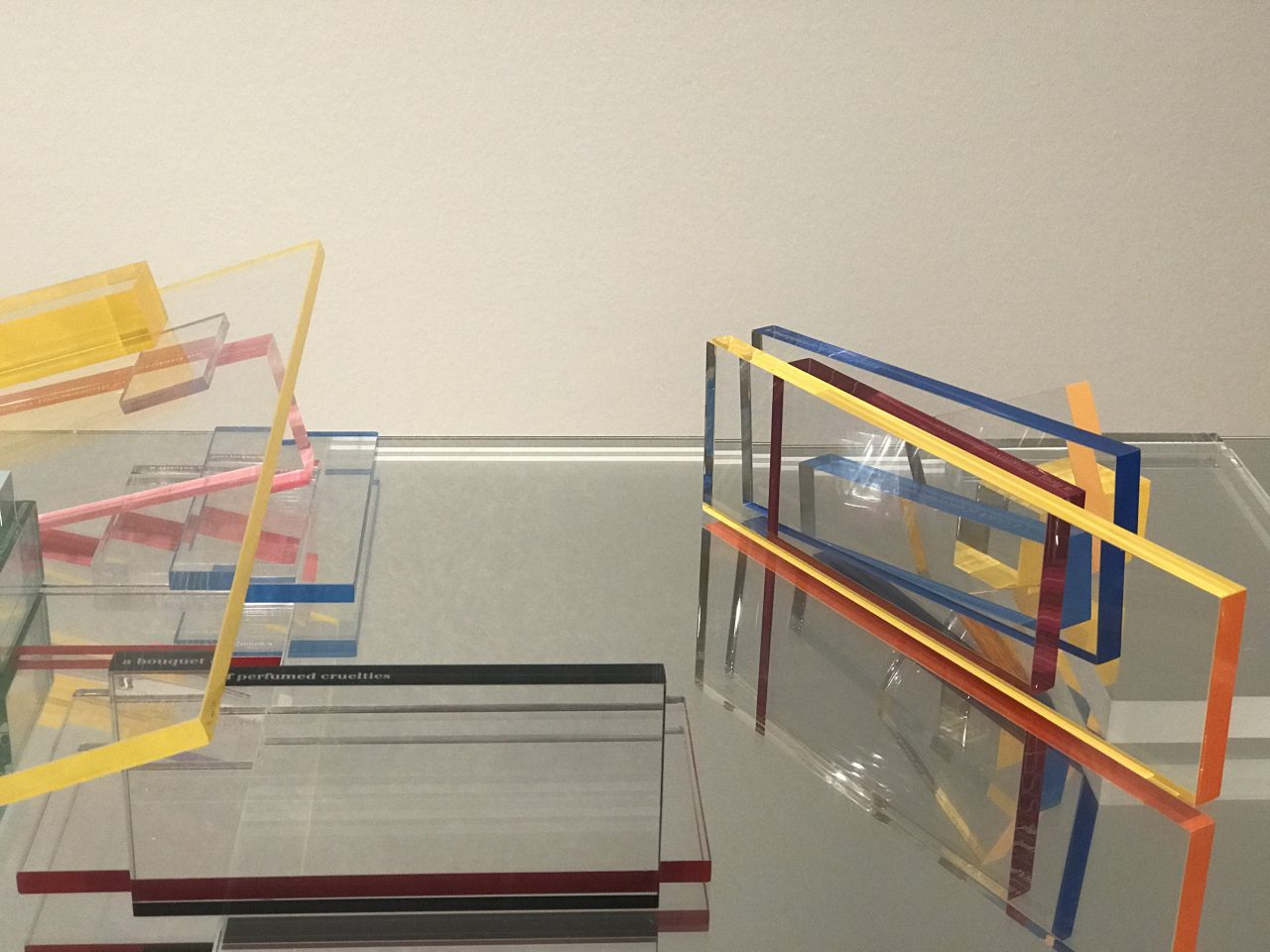
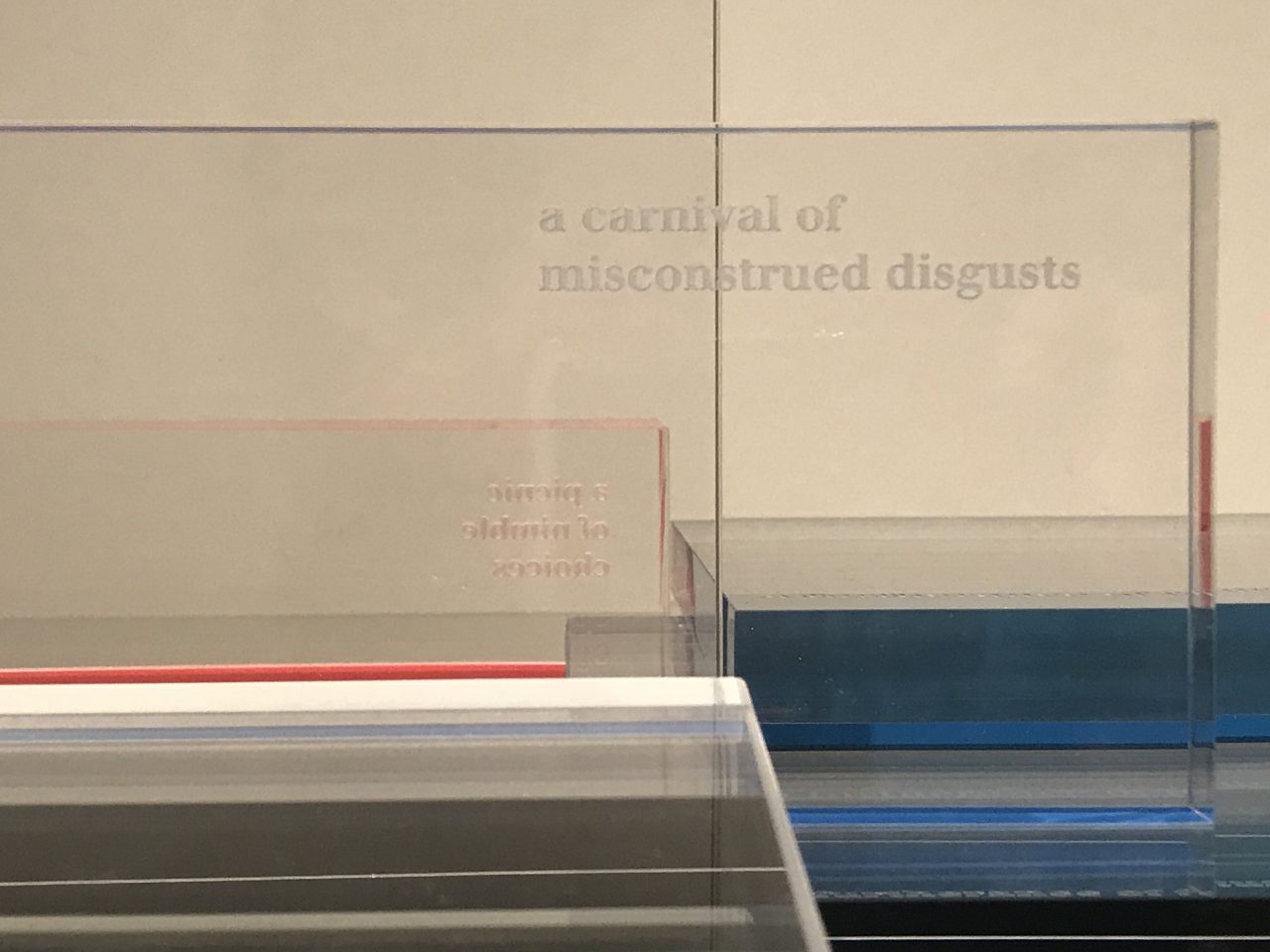
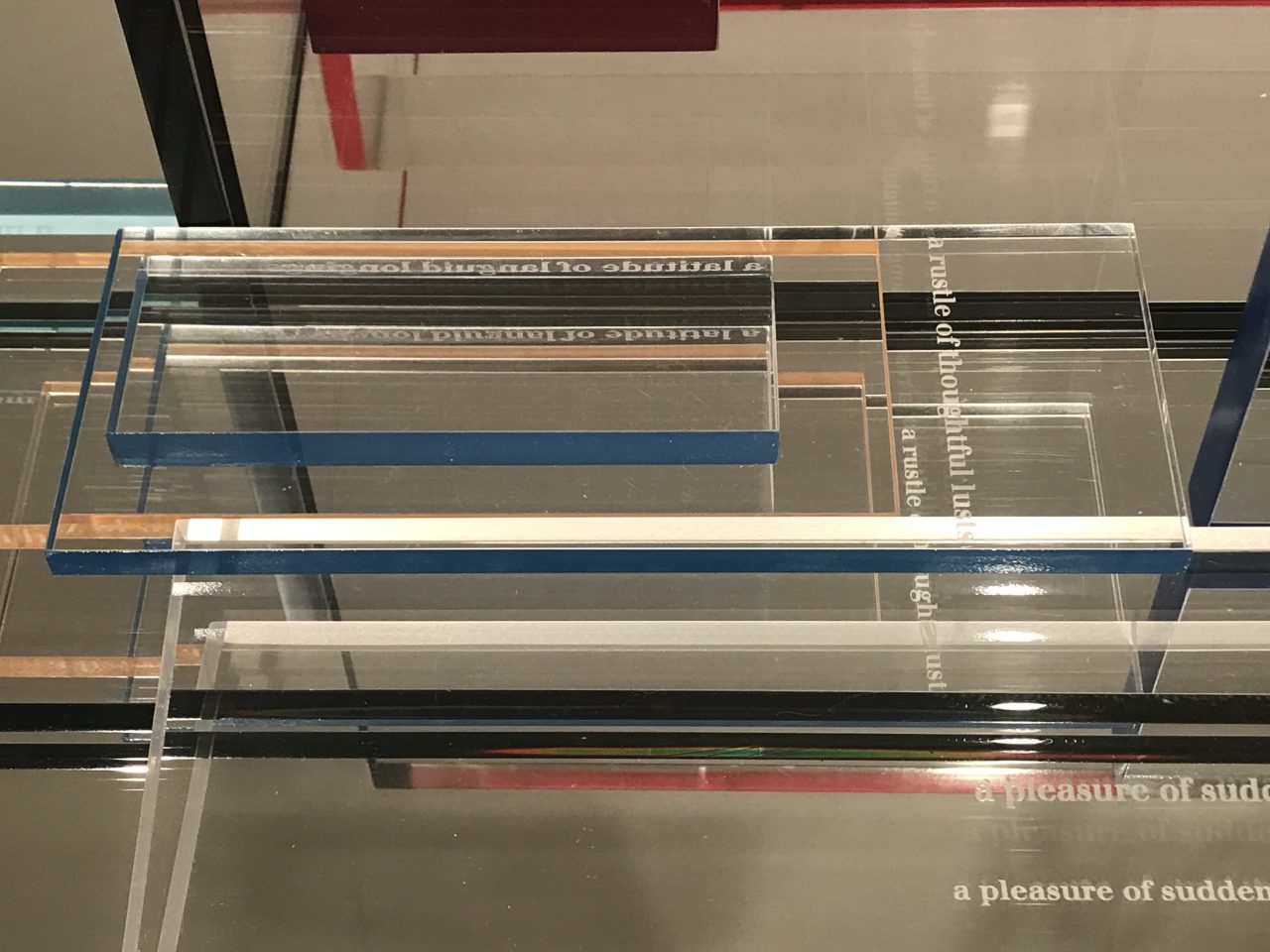
Corrections to the First Draft of History
Newspaper, blackboard paint, chalk, multiple frames
In 1850, a man called Peary Churn Sarkar wrote up a primer for Bengalis to learn English with. He called it, ‘The First Book of Reading’. It was a textbook, a lexicon, an almanac, an enchiridion. With it, pupils learnt to read English, word by word, aloud at first, and then silently. With a new primer comes a new world, and a new time. Being a witness to history is to consider the transformation of what is happening into what is no longer happening. It is to see the world turn spectral before our eyes. Corrections to the First Draft of History ‘rewrites’ on newsprint of the world so as to speak of making new sets of meanings for what is considered history in our present times.









